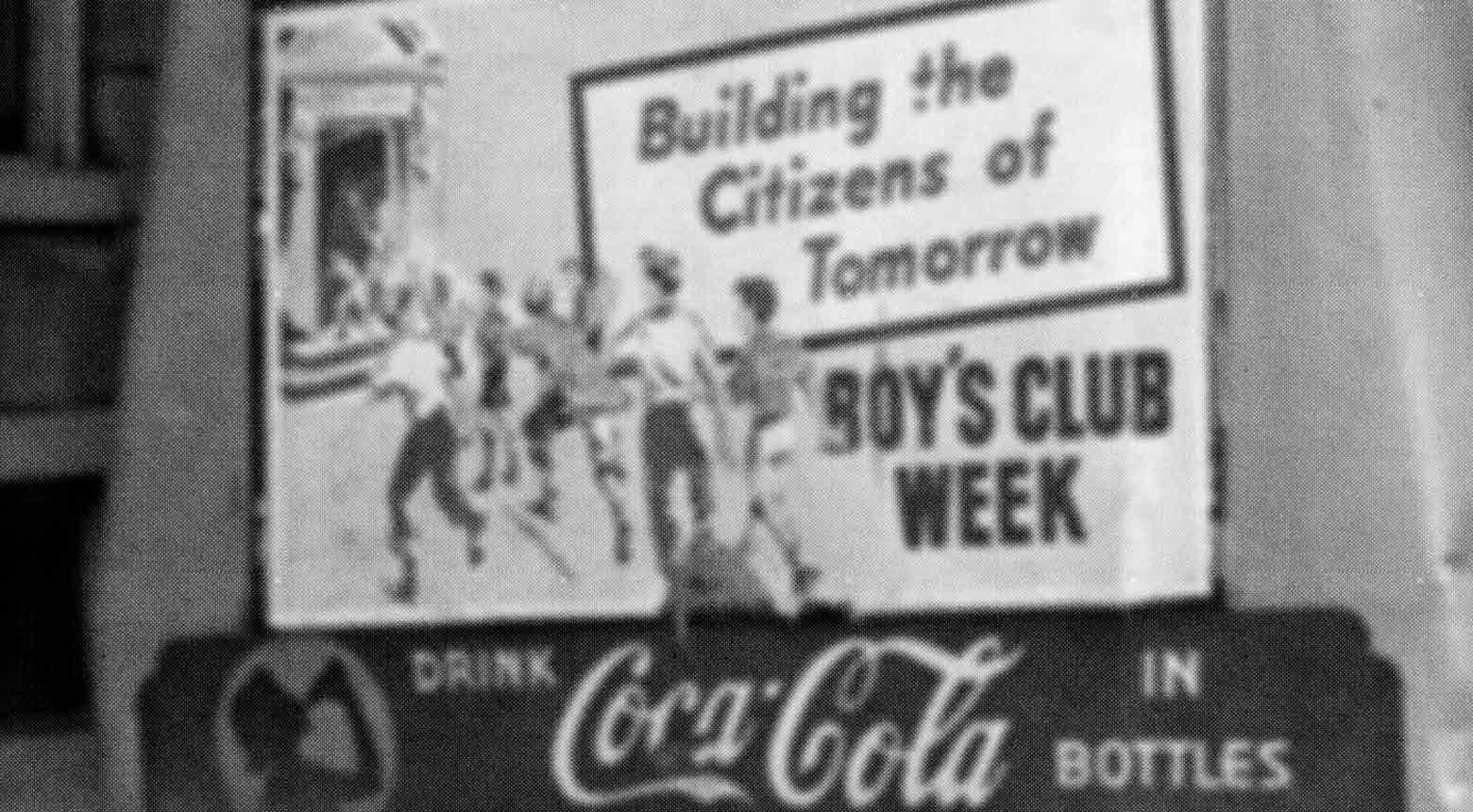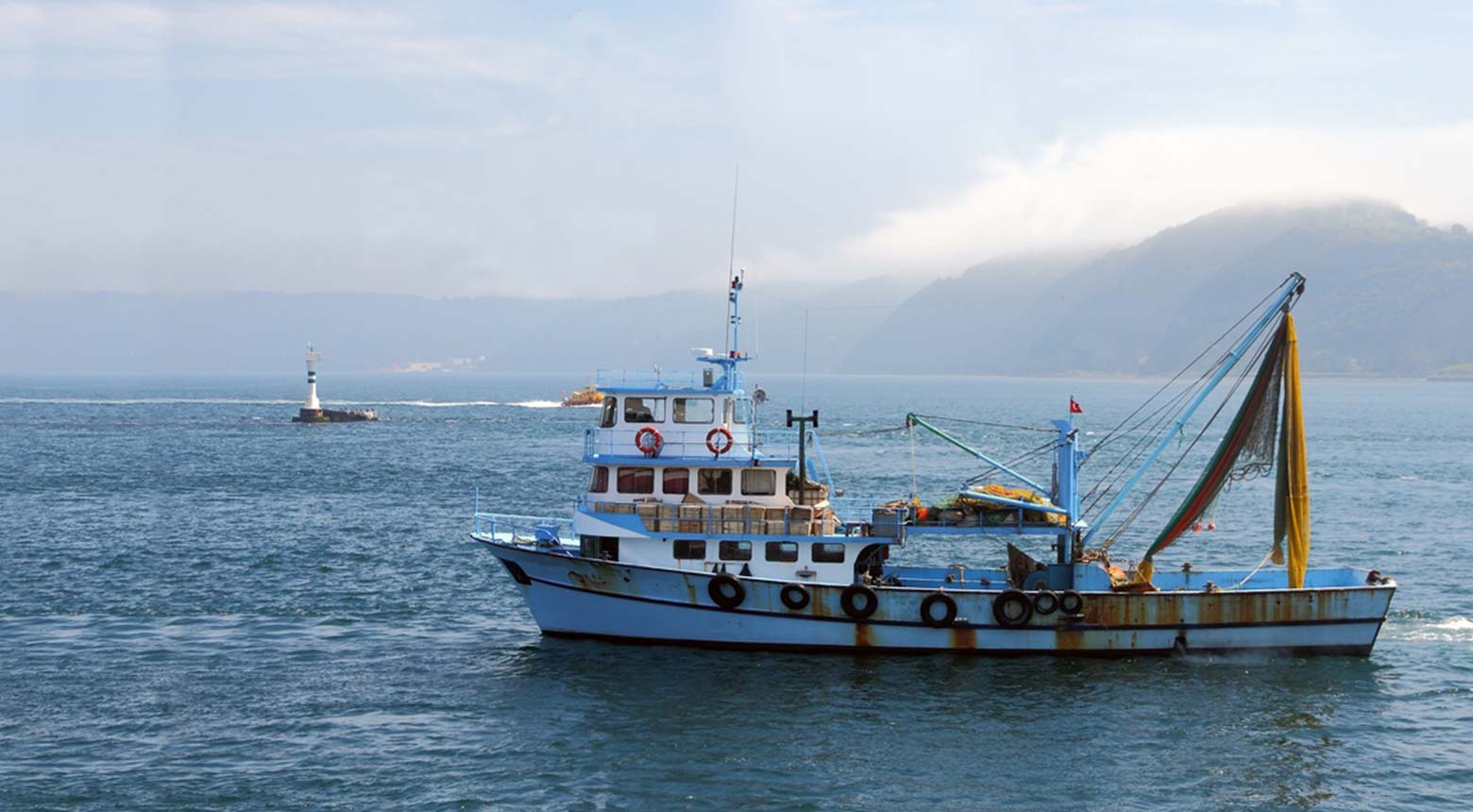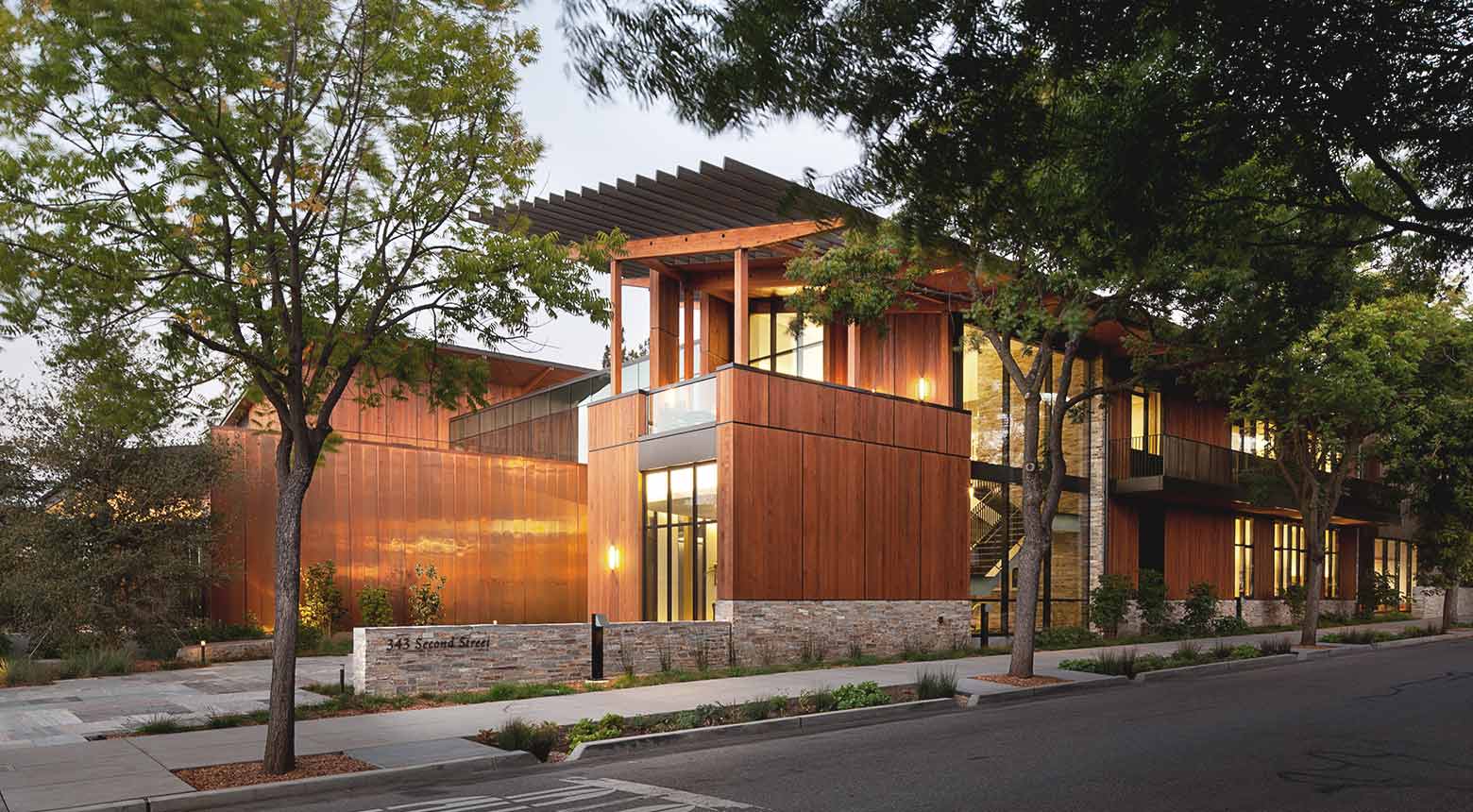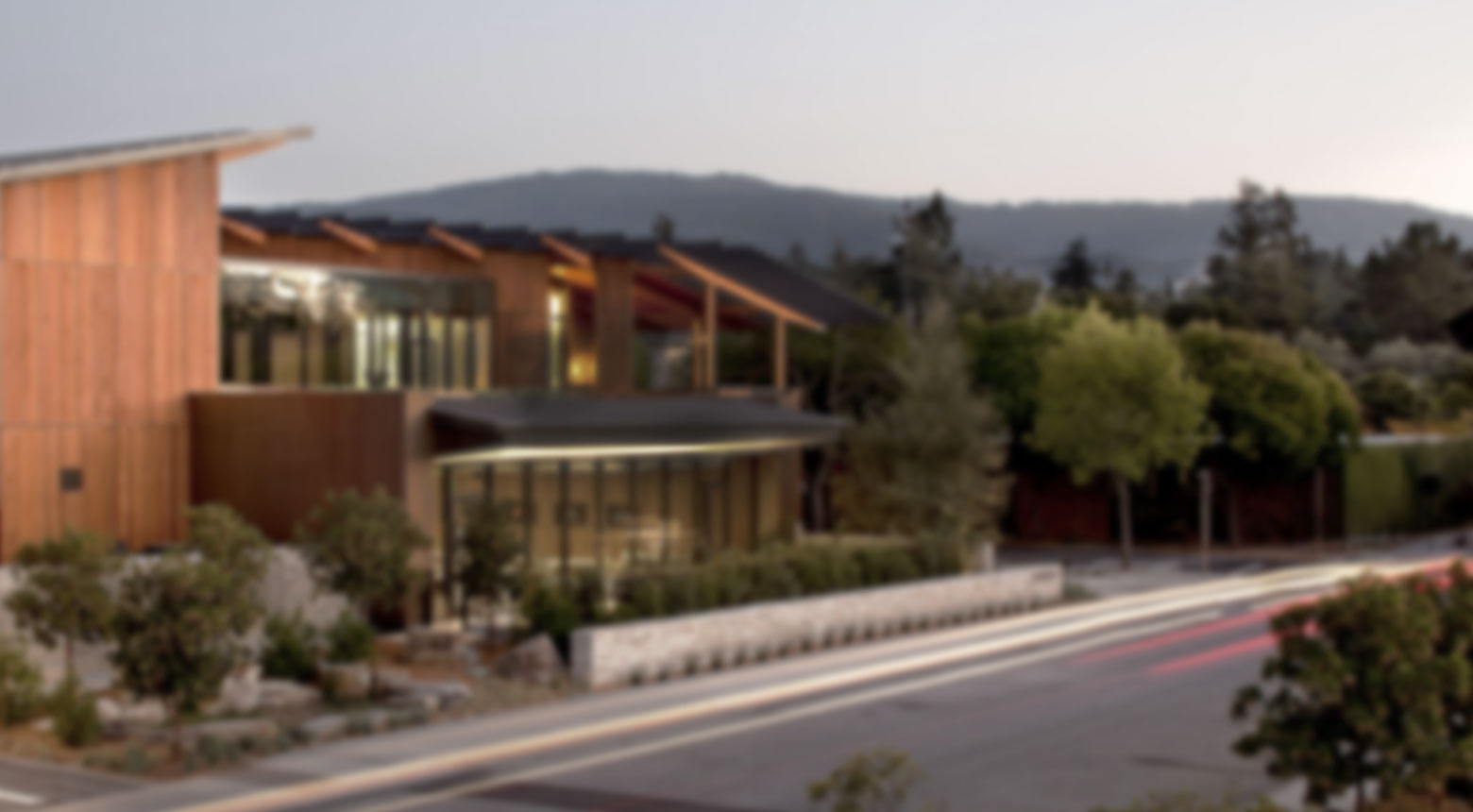
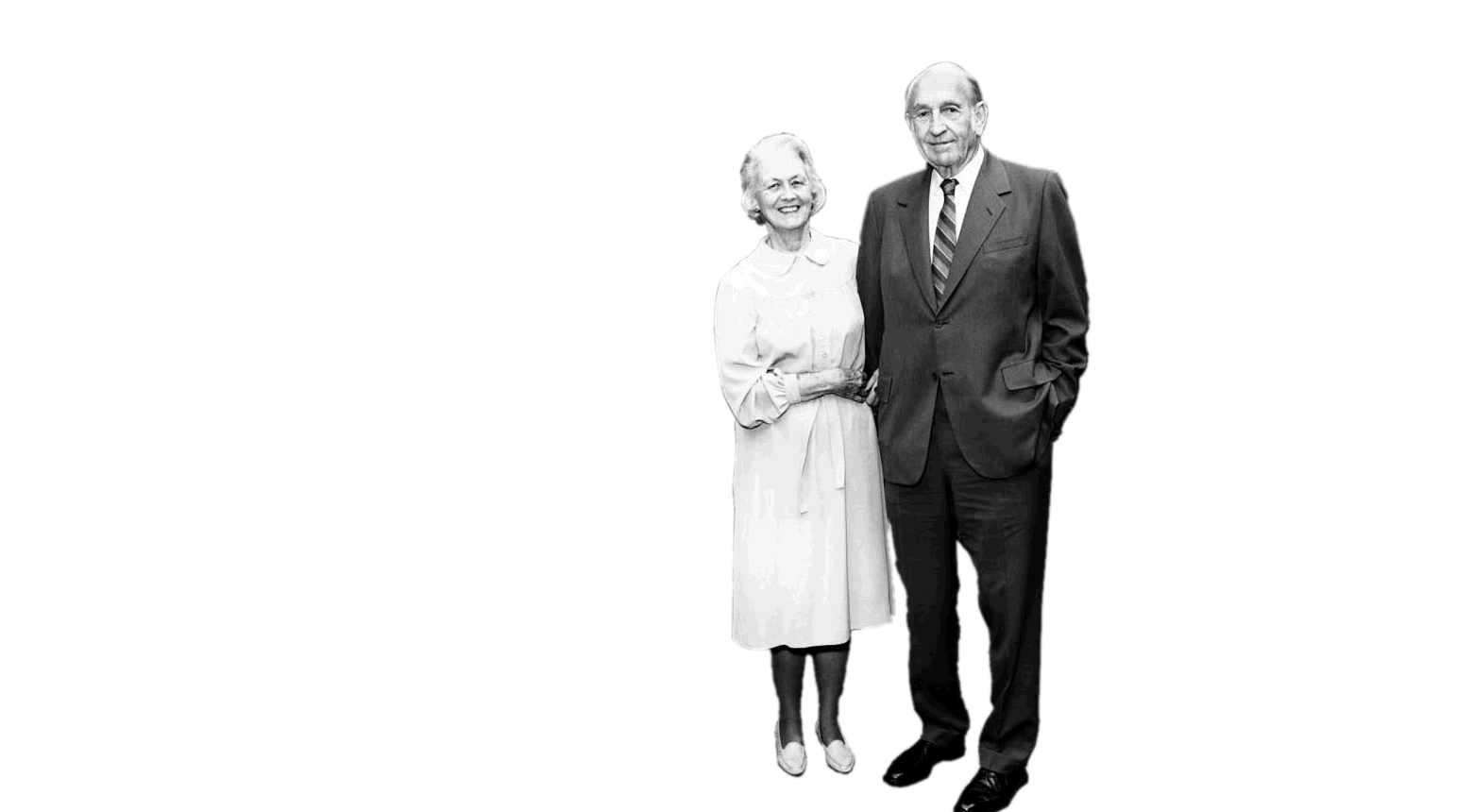
1964
The David and Lucile Packard Foundation is Born
A family’s tradition of giving becomes official.
David Packard, one of the founders of the technology company Hewlett-Packard, establishes a family foundation with his wife, Lucile Packard.
David Packard, one of the founders of the technology company Hewlett-Packard, establishes a family foundation in partnership with his spouse, Lucile Packard. Already active philanthropists, their foundation receives corporation status in March 1964. The first Foundation Board is comprised of David, Lucile, their son, David Woodley Packard, and an attorney, Nathan Finch. The intention is to add more family members to the enterprise.
During the first year, the Foundation awards $10,767.18 for a total of 20 grants. Early grantees, such as the San Francisco Symphony, the Children’s Health Council, and the local YMCA and YWCA—represent what would become long-term interest areas of the Foundation. In 1966, a couple of individual grant commitments are over $75,000 for the first time, including a grant to the national Planned Parenthood for three years.
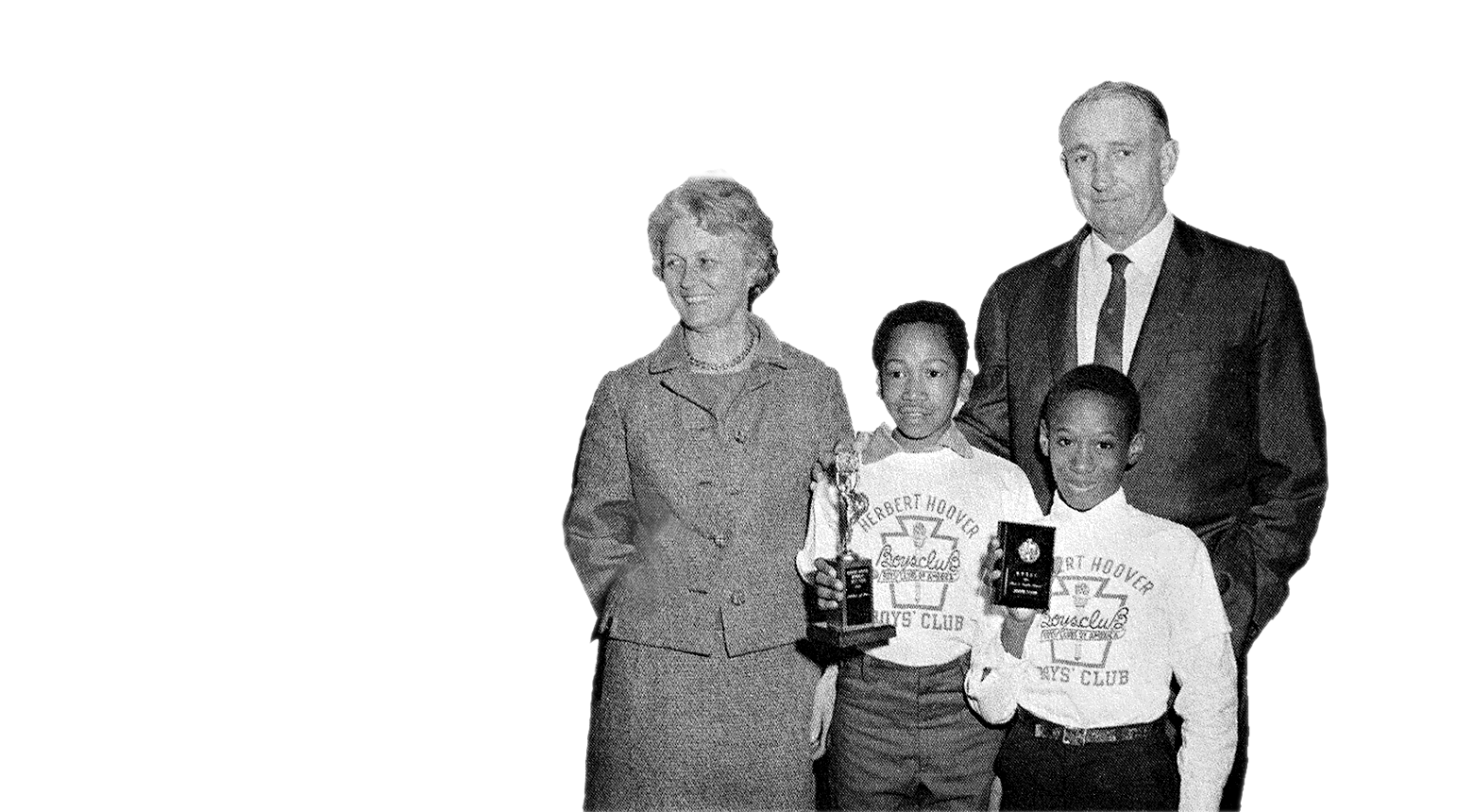
1971
The Foundation’s Interests Take Shape
Program areas emerge and Foundation giving increases.
In 1971, the Foundation has five defined areas of grantmaking: Conservation and Ecology, Cultural, Education, Health, and Youth and Minority. Just over $100,000 in awards are authorized that year.
In 1971, the Foundation has five defined areas of grantmaking: Conservation and Ecology, Cultural, Education, Health, and Youth and Minority. Just over $100,000 in awards are authorized that year.
During this year, Lucile Packard is chair of the Foundation Board. (David Packard serves as U.S. Secretary of Defense from 1969-1971, and is not on the Foundation Board during this period.) In making these awards at the June Board meeting, Lucile discusses new federal tax provisions which require that a private foundation give the lesser of its actual income or a statutory imputed minimum return on its assets by the end of the year following close of the year of receipt of such income. She states that the Foundation has never in the past confined its grantmaking to the limitations of its income, and that therefore she urges compliance with the future requirements of the law from this year onwards.
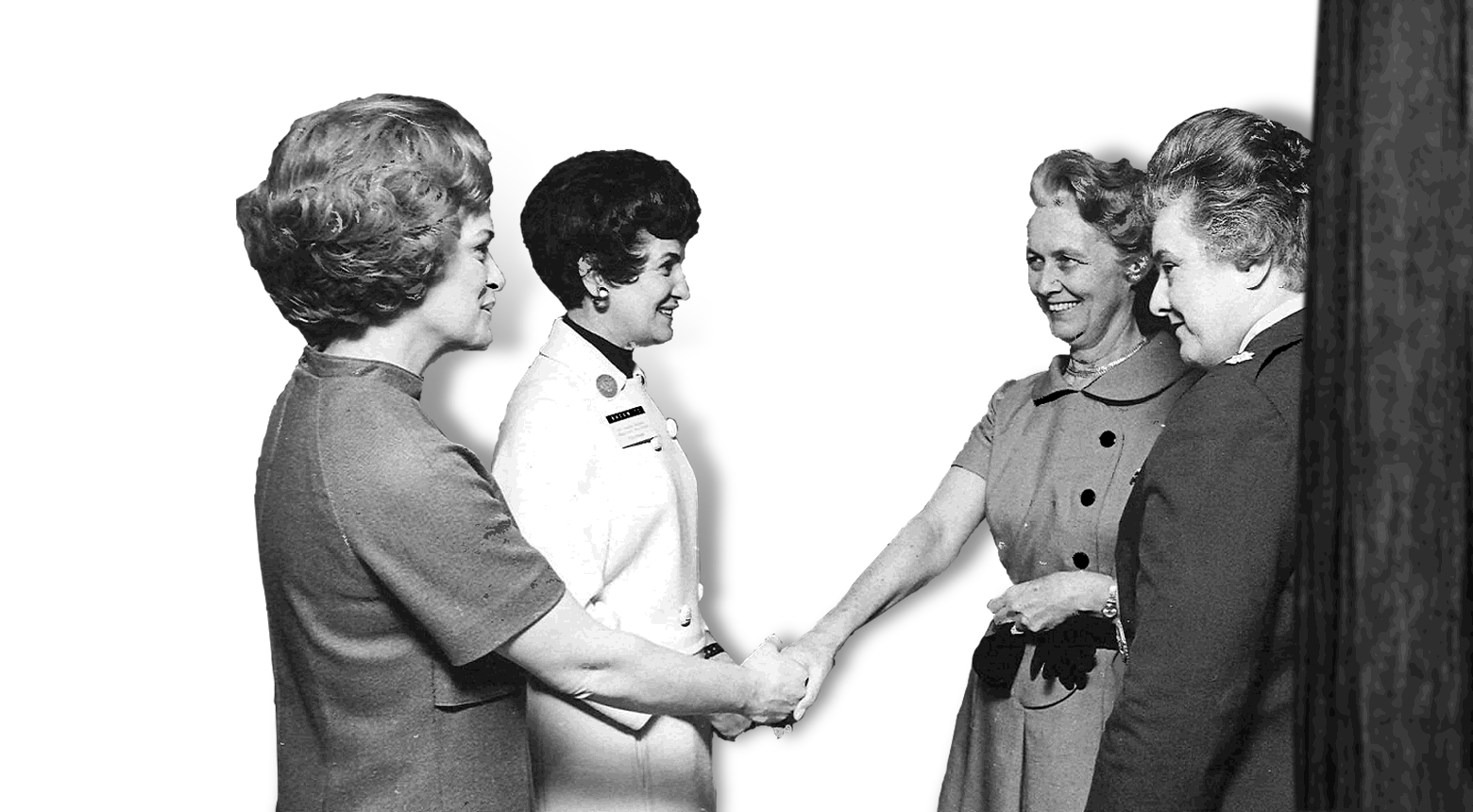
1975
A Philanthropy Grows Up
The Packard Foundation hires staff, opens an office, and expands giving.
The Foundation begins to expand operations and staff. Although grantmaking stays aligned with David and Lucile’s interests and values, more staff and space are needed to support a growing body of giving.
Ten years into its incorporation, the Foundation needs some staff and office space to support a growing body of giving. In 1975, the Foundation hires a part-time staff person and rents office space at 330 Second Street in downtown Los Altos, California. Prior to this, David and Lucile Packard covered any operating expenses of the Foundation personally. In December 1976, the Foundation hires its first full-time employee.
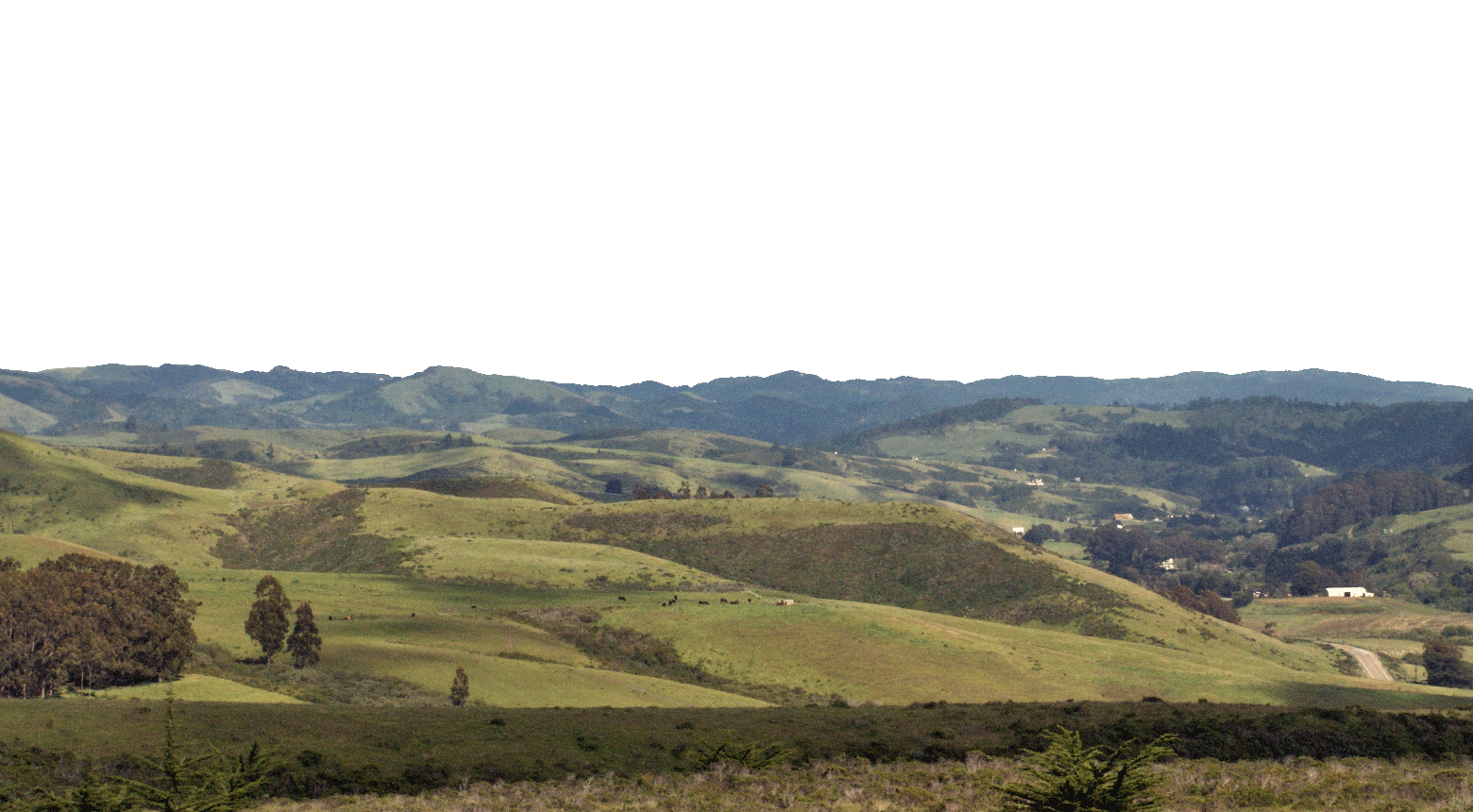
1977
Protecting Open Space in Sprawling Silicon Valley
Foundation invests in Peninsula Open Space Trust to protect open space, farms and parkland in fast-growing, expensive Silicon Valley.
The Foundation joins with local visionaries to launch the Peninsula Open Space Trust, conserving lands on the San Francisco Peninsula. With the Foundation’s support, the Trust has now protected over 70,000 acres in perpetuity.
The Foundation joins with local visionaries to launch the Peninsula Open Space Trust (POST), conserving lands on the San Francisco Peninsula. With the Foundation’s support, the Trust has now protected over 70,000 acres in perpetuity.
POST promotes conservation on private lands, nimbly stepping in when governments cannot. Their vision is to create a network of protected lands that provide beauty, clean air and water, locally grown food and a place for people and wildlife to thrive.
As of 2014, the Packard Foundation has invested more than $63 million in POST, supporting their efforts to conserve grasslands, woodlands, beaches and bluffs in one of the most expensive real estate markets in the world.
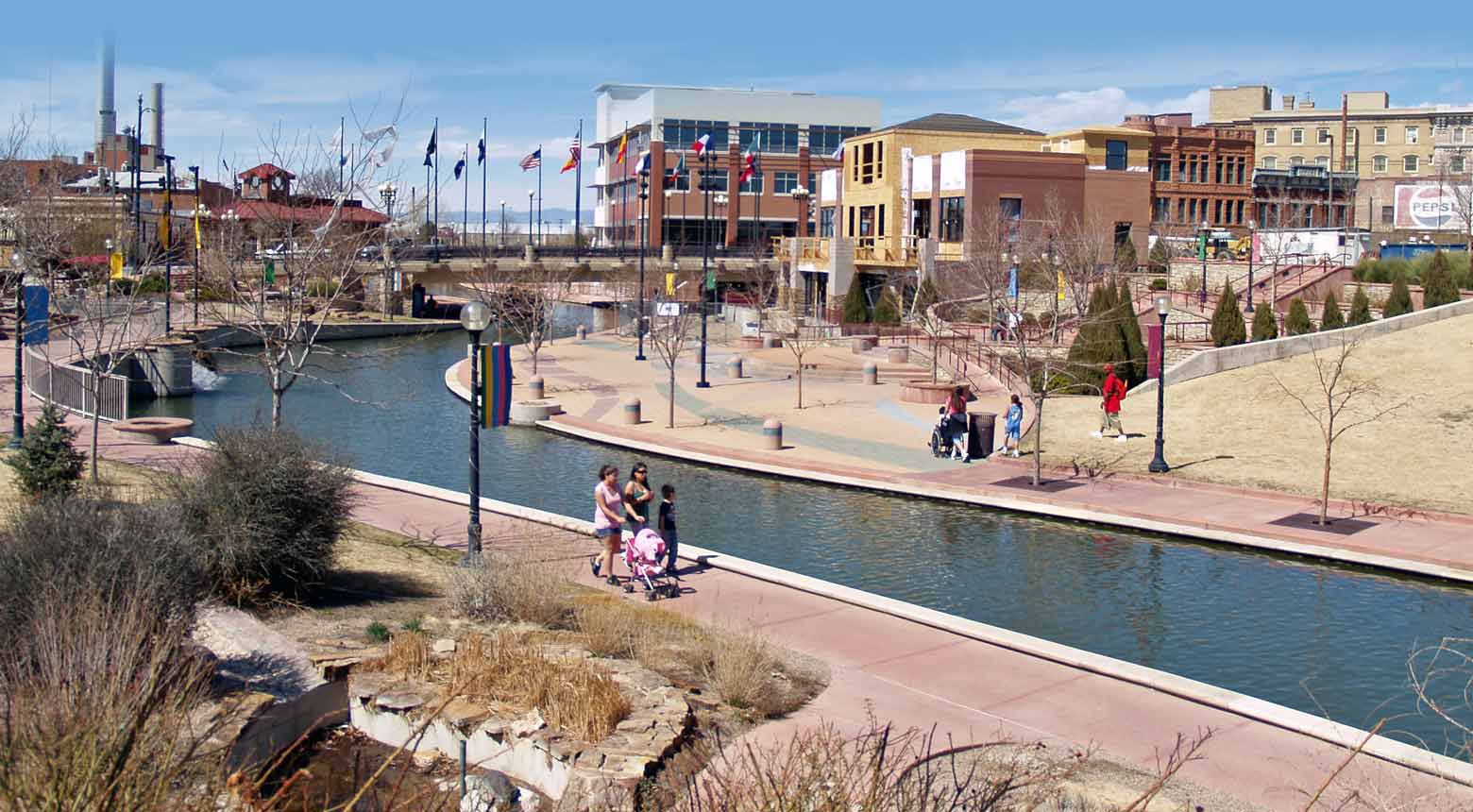
1977
Building Community in David Packard’s Childhood Home
Pueblo Advisory Board created to anchor lasting community grantmaking where David Packard was born and raised.
The Foundation creates the Pueblo Advisory Board to support grantmaking in Pueblo, Colorado, where David Packard was born and raised. As of 2014, nearly $19 million in grants have been made to nonprofits in the area.
The Foundation creates the Pueblo Advisory Board to support grantmaking in Pueblo, Colorado, where David Packard was born and raised. As of 2014, nearly $19 million in grants have been made to nonprofits in one of the poorest counties in Colorado.
A part of the Foundation’s Local Grantmaking program, the goal of the effort is to support nonprofits that serve residents of Pueblo County. Over the years, more than 50 local residents have helped guide grantmaking focused on education, childcare, youth development, senior services, health and human services, teen pregnancy prevention, nonprofit support services, and arts and culture.
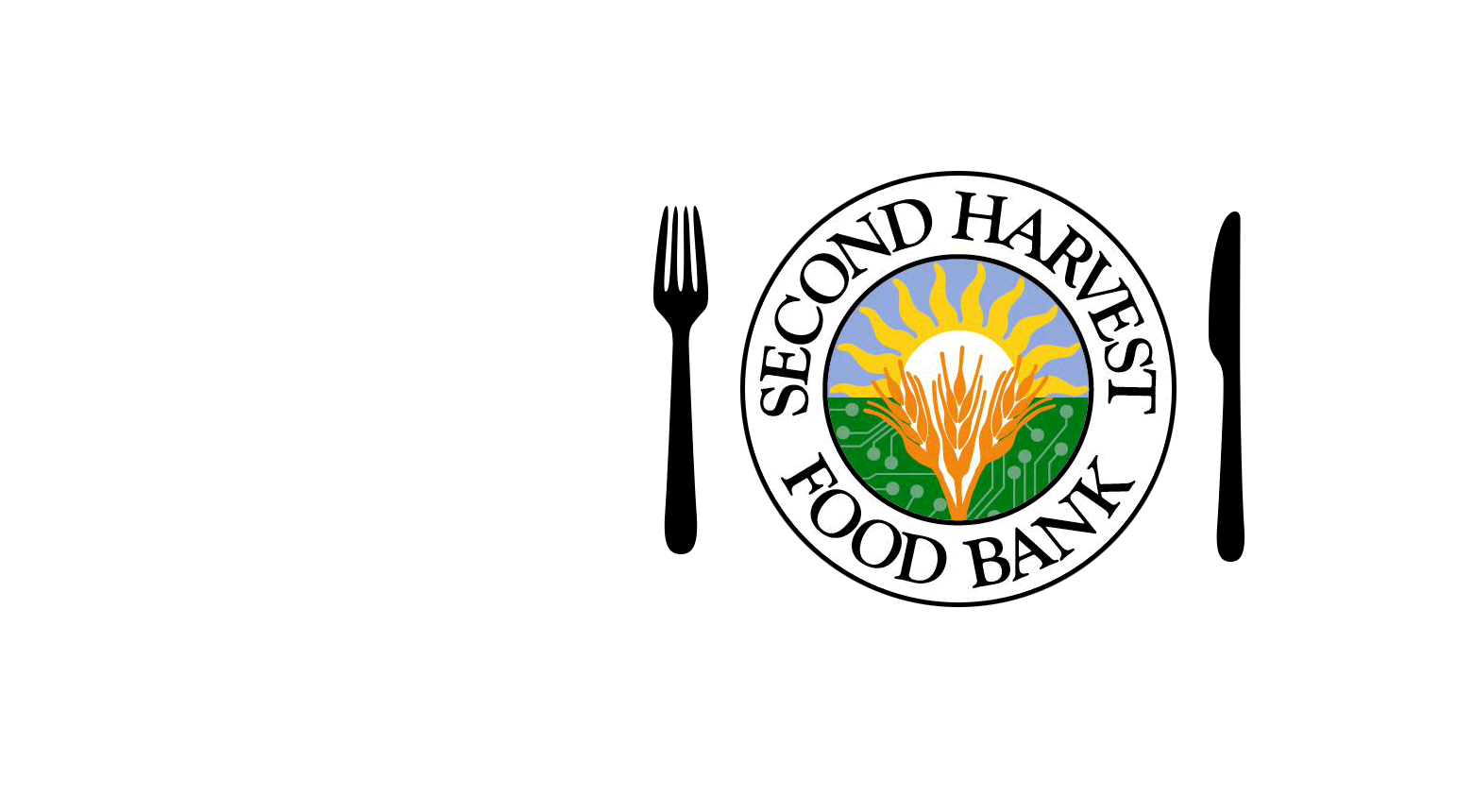
1979
Anchor Support for Food Banks in Silicon Valley
Foundation begins extended relationship with Second Harvest Food Bank of Santa Clara and San Mateo Counties.
The Foundation begins its extended relationship with Second Harvest Food Bank of Santa Clara and San Mateo Counties, which goes on to become one of the largest food banks in the nation, serving nearly 250,000 people each month.
The Foundation begins its extended relationship with Second Harvest Food Bank of Santa Clara and San Mateo Counties, which goes on to become one of the largest food banks in the nation, in 2014, serving nearly 250,000 people each month.
The investment in Second Harvest starts the Foundation’s long history of support for food banks in the region, which continues to the present. Originally focused on lack of calories, over the years the food bank shifts focus to promoting fresh fruits and vegetables, nutrition education and healthy lifestyles as childhood obesity and diabetes reach epidemic proportions.
In 2010, the Foundation makes a one million dollar grant to Second Harvest that helps create a new food distribution facility. This allows Second Harvest to increase the amount of nutritious produce provided to the community, ultimately translating into 18 million additional meals for the Silicon Valley Region.
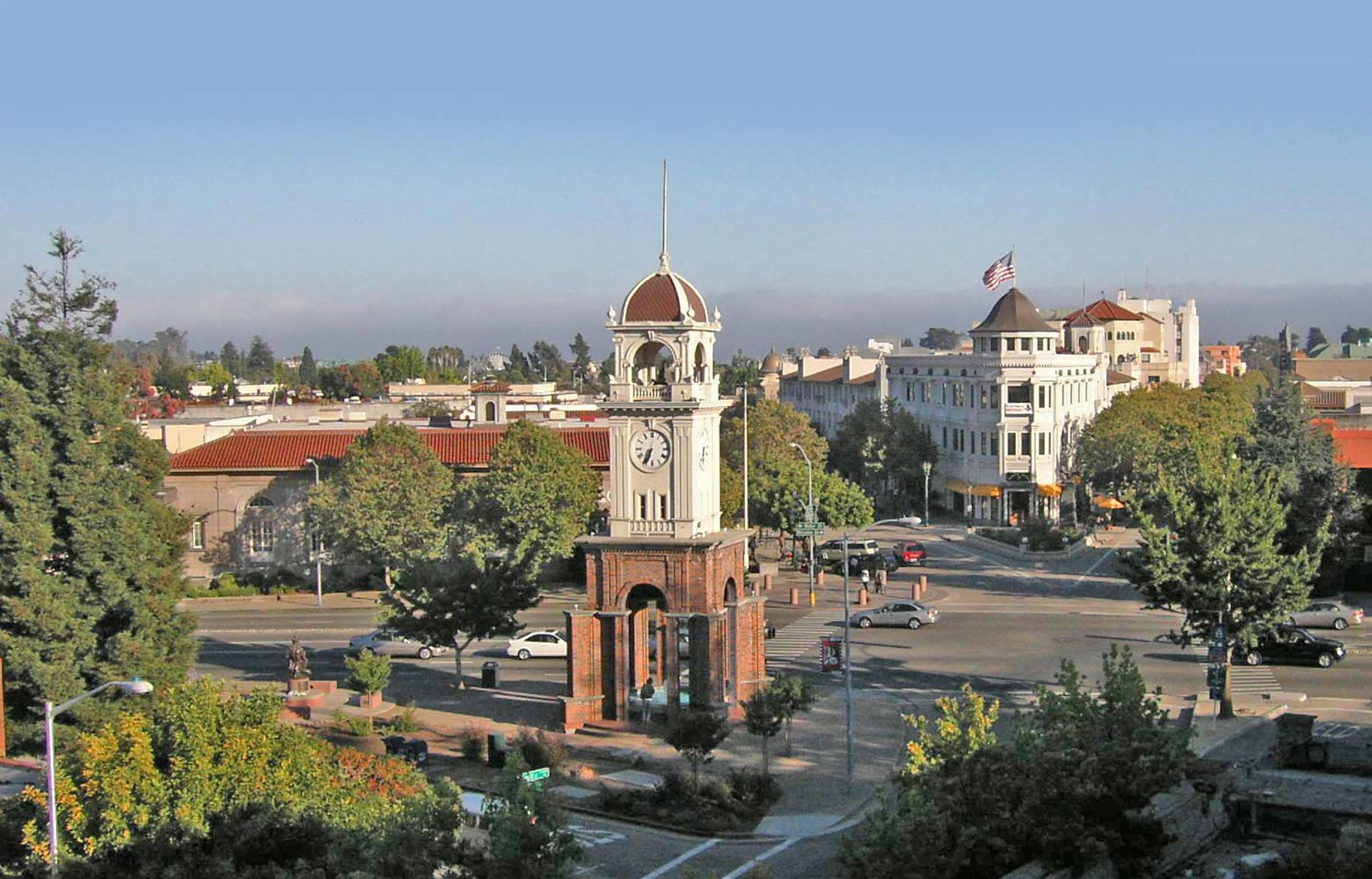
1982
Launching and Supporting Community Foundations to Strengthen Local Areas
Local community foundations empowered to create new ways for people to invest in the region.
To help people invest in their community, the Foundation provides its first assistance to start a community foundation – this one in Santa Cruz County, which works to make the region a better place to live, now and in the future.
To help people invest in their community, the Foundation provides its first assistance to start a community foundation – this one in Santa Cruz County, which works to make the region a better place to live, now and in the future.
As of 2014, it manages more than 350 philanthropic funds, awards more than $4 million in grants each year, and provides workshops and resources to hundreds of local organizations.
Across the region, the Packard Foundation goes on to nurture growth of several community foundations, including those in Los Altos, Palo Alto, and Monterey, Santa Clara, San Mateo and San Benito Counties. In 2007, the Foundation is one of five area funders that supports the merger efforts that results in the creation of the Silicon Valley community foundation, now one of the largest community foundations in the country. As of 2014, the Foundation has given a total of $46,671,899 over 50 years to community foundations in the five local counties targeted for local support.

1983
Supporting Core NonProfit Organization Functions
David Packard starts a program to focus on the fundamentals of nonprofit success.
David Packard begins the Management Assistance program with a core belief: Organizations are more effective when they are equipped with thoughtful strategy, strong leadership, and sound operations.
David Packard begins the Management Assistance program with a core belief: Organizations are more effective when they are equipped with thoughtful strategy, strong leadership, and sound operations. At the time, only three other foundations in the country are focused on helping grantees strengthen these fundamentals so they can achieve their missions. The Management Assistance program is now known as the Organizational Effectiveness program which still helps organizations achieve their missions by offering support for the fundamentals. Many more foundations now offer capacity-building support for grantees.
In 1998, the Foundation goes on to help create Grantmakers for Effective Organizations (GEO), which acts as a coalition of 3,600 individuals representing nearly 450 grantmaking organizations. Realizing that grantmakers are only successful when their grantees achieve meaningful results, GEO promotes strategies and practices that contribute to grantee success.

1984
The Monterey Bay Aquarium Opens
The Packard family opens an aquarium to reach new generations of ocean conservationists.
In October 1984, the Monterey Bay Aquarium officially opens its doors after years of planning and construction. The aquarium project is led by marine scientists, local residents, and several members of the Packard family, including David and Lucile Packard.
In October 1984, the Monterey Bay Aquarium officially opens its doors after years of planning and construction. The effort is led by marine scientists, local residents, and several members of the Packard family. The Aquarium is located on the site of the old Hovden Cannery in Monterey, next door to Stanford’s Hopkins Marine Station in Pacific Grove. Initial construction costs, which ultimately total $55 million, are provided through a one-time personal gift from David and Lucile Packard.
David Packard’s daughter, Nancy Burnett, is part of the initial group of visionaries and planners for the Aquarium, and is joined shortly thereafter by her sister, Julie Packard, who ends up serving as the Aquarium’s Executive Director and holds this position to this day. On the Aquarium’s first day, over 10,000 people show up, with the line stretching all the way down the historic Cannery Row. Over the years, the David and Lucile Packard Foundation makes almost $60 million in grants to the Aquarium as part of its ongoing effort to support sustainable seafood and conservation education programs.

1987
Packard Humanities Institute Preserves Film, Literature, Music
The Packard Humanities Institute (PHI) is established for basic humanities and to foster public interest in the history, literature, and music of the past.
The Packard Humanities Institute (PHI) is established in 1987 to create tools for basic research in the Humanities and to foster public interest in the history, literature, and music of the past.
The Packard Humanities Institute (PHI) is established in 1987 to create tools for basic research in the Humanities and to foster public interest in the history, literature, and music of the past. Before PHI existed, the David and Lucile Packard Foundation made grants to support some of these same activities.
PHI is an operating foundation. PHI works on a small number of projects, all of which involve long-term financial commitments and professional partnerships with teams of scholars at major universities. In the first decade, PHI’s initial focus is on producing computer databases for basic research in the Humanities. PHI works with scholars and leading universities to convert Greek, Latin, Hebrew and Coptic texts, papyrii and other Classical materials into digital form.
In 1999, the Packard Foundation makes an endowment grant of $1.5 billion to PHI. In the next decade the work focuses on archaeology, film preservation and creating digital scholarly editions of all of the work of C.P.E. Bach and Mozart. The largest capital project is a partnership with the Library of Congress to create the National Audiovisual Conservation Center which opened in 2008.

1987
Investing in Women-Led Organizations to Advance Opportunity
Global Fund for Women advances women’s human rights and dignity with support from the Packard Foundation.
To advance the rights of women and girls, the Foundation incubates the Global Fund for Women by providing office space and funding as it begins operations. The Fund invests in women-led organizations and women’s leadership.
To advance the rights of women and girls, the Foundation incubates the Global Fund for Women by providing office space and funding as it begins operations. The Fund invests in women-led organizations and women’s leadership.
Convinced that women’s human rights and dignity are essential to advance agendas for social, economic and political change, the founders use funding to promote a just, equitable and sustainable world in which women and girls have resources, voice, choice and opportunity.
In 2013 the Fund awards nearly $9 million in grants, the highest level in its history.
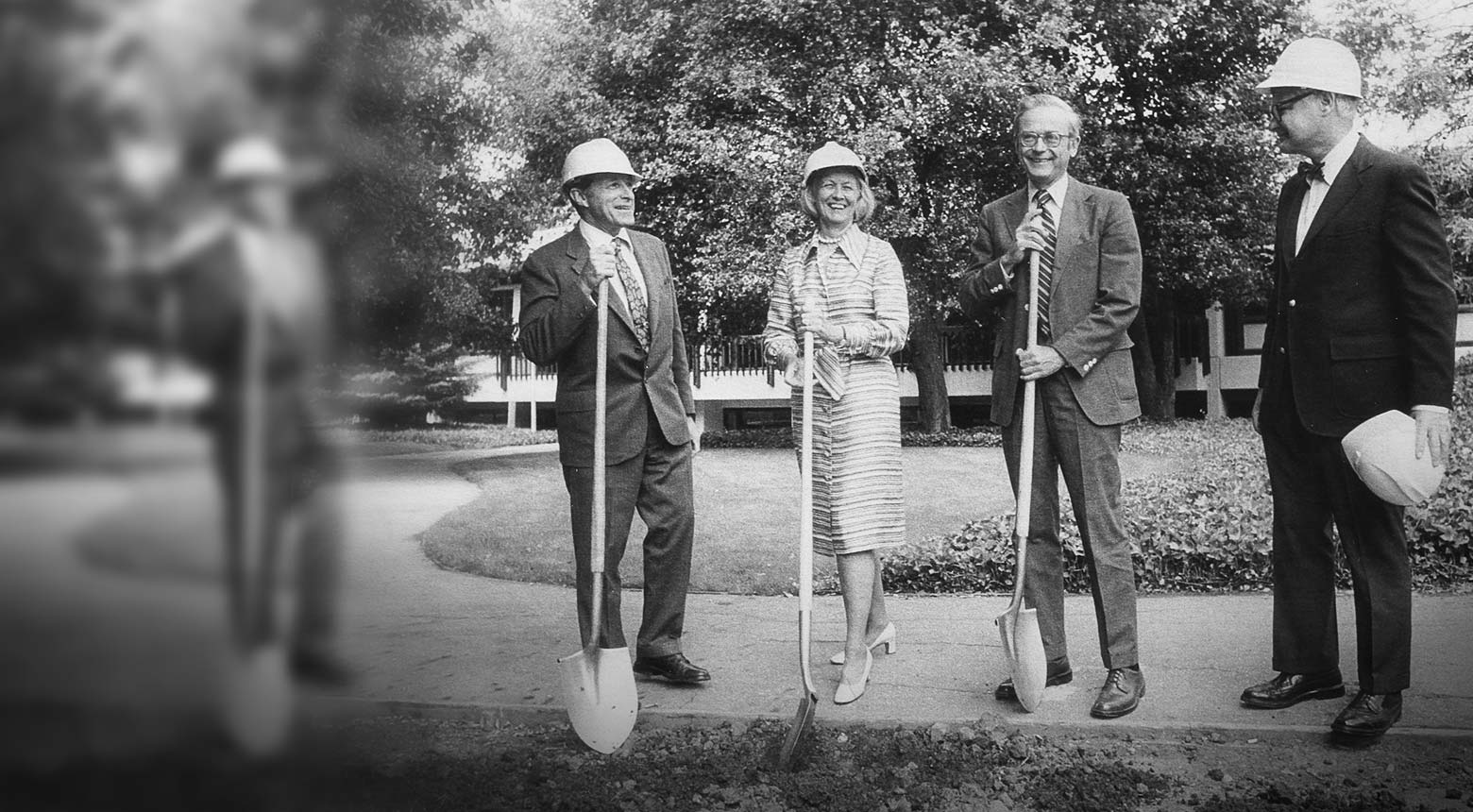
1987
Creating a World-Class, West Coast Children’s Hospital
The Packards fund the Lucile Salter Packard Children’s Hospital at Stanford, a world-class center of excellence.
David and Lucile Packard donate over $40 million and personal leadership to design, build, and open the Lucile Salter Packard Children’s Hospital at Stanford. The Hospital goes on to be ranked in the top ten nationally, the youngest institution ever to achieve this honor.
Lucile and David Packard donate over $40 million and provide personal leadership to design, build, and open the Lucile Salter Packard Children’s Hospital at Stanford. The Hospital goes on to be ranked in the top 10 nationally, the youngest institution ever to achieve this honor.
With the goal of serving as an internationally recognized pediatric and obstetric hospital, the Hospital advances family-centered care, fosters innovation, translates discoveries, educates health care providers and leaders, and advocates on behalf of children and expectant mothers.
As of 2013, through grants to the Lucile Packard Foundation for Children’s Health and to the hospital itself, the Packard Foundation has provided $400,928,402 for both the facilities and operational excellence of the Hospital.

1987
Advancing STEM through Historically Black Colleges
The Foundation invests $18.8 million in Historically Black Colleges and Universities to advance STEM fields between1987-2002.
To strengthen education in science, technology, engineering and mathematics (known today as STEM) and train new professionals, the Foundation invests $18.8 million in Historically Black Colleges and Universities.
To strengthen education in science, technology, engineering and mathematics (STEM) and train new professionals, the Foundation invests $18.8 million in Historically Black Colleges and Universities.
In 2000 these colleges and universities graduate 40 percent of all African Americans receiving bachelor’s degrees in STEM fields, according to a report by the Southern Education Foundation that was funded by the Packard Foundation.
The same report finds that cultivating students still in high school, financial aid, faculty advisement and involving students directly in STEM research encourages them to pursue these fields. With a record of success, the schools represent a vital way to increase Black presence in STEM fields.
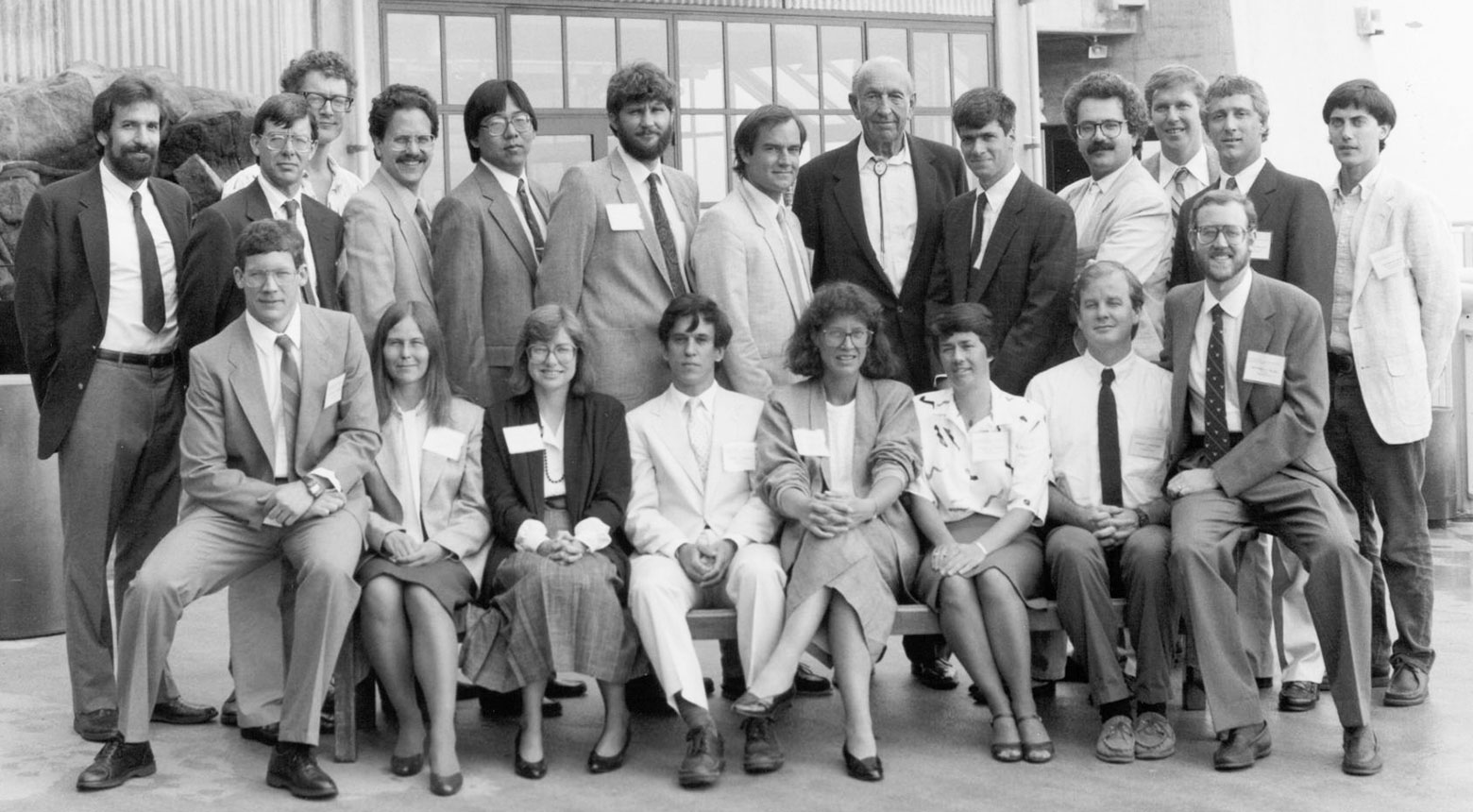
1988
Funding Major Fellowship Program to Spur Creative Pursuit of Science
Foundation creates Packard Fellowships for Science and Engineering to bring fresh thinking to complex issues.
The Foundation awards its first Packard Fellowships for Science and Engineering to bring fresh thinking and perspectives to complex issues. As of 2014, eighteen Fellowships are awarded annually providing $875,000 over five years to each promising professor to advance his/her research.
The Foundation awards its first Packard Fellowships for Science and Engineering to bring fresh thinking and perspectives to complex issues. As of 2014, eighteen Fellowships are awarded annually providing $875,000 over five years to promising professors to advance his/her research.
Targeting professors early in their careers, an advisory panel of distinguished scientists selects fellows from a pool generated by nominations from 50 leading research universities. Disciplines considered include physics, chemistry, engineering, computer sciences, and earth sciences, among others.
As of 2014, over 500 scientists have received fellowships over its 25 year history. Fellows have gone on to earn additional honors, including the Nobel Prize in Physics; the Fields Medal; and MacArthur, Sloan, Searle, and Guggenheim fellowships.

1988
Preserving Historic Venue for Hollywood Classics
The Foundation purchases the historic Stanford Theatre to protect and restore “the Pride of the Peninsula.”
To protect and restore “the pride of the Peninsula,” as it was known when it first opened in 1925, the Foundation purchases the historic Stanford Theatre.
To protect and restore “the pride of the Peninsula,” as it was known when it first opened in 1925, the Foundation purchases the historic Stanford Theatre.
A classical independent movie theatre in Palo Alto, it was designed by San Francisco architects Weeks and Day, whose work also included the St. Francis Hotel. Operated by the Stanford Theatre Foundation under leadership of David Woodley Packard, the Theatre becomes America’s most popular place to watch Hollywood classics.
In 1992, more people see Casablanca on its 50th anniversary at the Theatre than anywhere else in the country. Today, the Theatre lends small-town charm to Palo Alto as people crowd in to watch “It’s a Wonderful Life” and other classics.
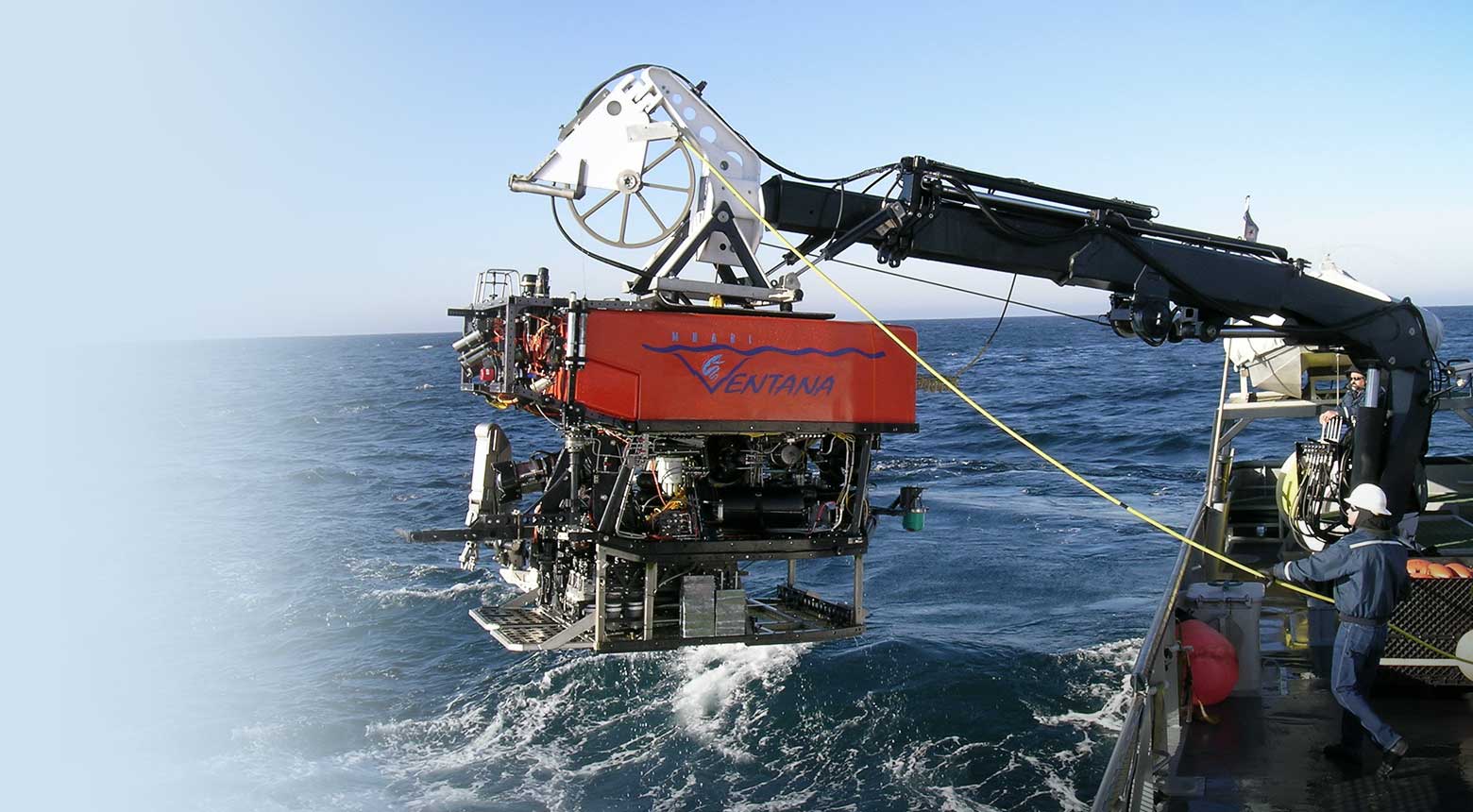
1989
Institute Established to Bring Together Top Engineers and Scientists for Oceans
Monterey Bay Aquarium Research Institute established as a leading center for oceans research and education.
The Foundation creates the Monterey Bay Aquarium Research Institute, a leading center for research in ocean science. Institute scientists go on to author more than 1200 reports and build the first U.S. deep-ocean observatories.
The Foundation creates the Monterey Bay Aquarium Research Institute (MBARI), a world center for research in ocean science. Institute scientists go on to author more than 1200 reports and build the first U.S. deep-ocean observatories.
As of 2014, the Foundation has invested more than $575 million to help MBARI achieve and maintain its position as a major center for advanced research and education. Considered the world leader in the application of autonomous underwater vehicles to ocean research and exploration, MBARI scientists discover several new organisms each year.

1991
Launch of Interdisciplinary Journal Devoted to Policy for Children
Inaugural issue of The Future of Children published to translate best social science research for policy recommendations affecting children.
Issue one of The Future of Children, a journal translating the best social science research about children into information that is useful to policymakers, grant-makers, advocates and others, is published by The Packard Foundation.
Issue one of The Future of Children, a journal translating the best social science research about children into information that is useful to policymakers, grant-makers, advocates and others, is published by The Packard Foundation.
Over 14 years and 30 issues, the Foundation publishes and distributes the journal to 65,000 people working in public, academic, and nonprofit organizations to promote children’s wellbeing.
In 2004, the journal is transferred to a partnership between the Brookings Institution and the Woodrow Wilson School of Public and International Affairs at Princeton University, which continues to publish it today. To reach a broad audience, the journal offers electronic versions and outreach forums free of charge.
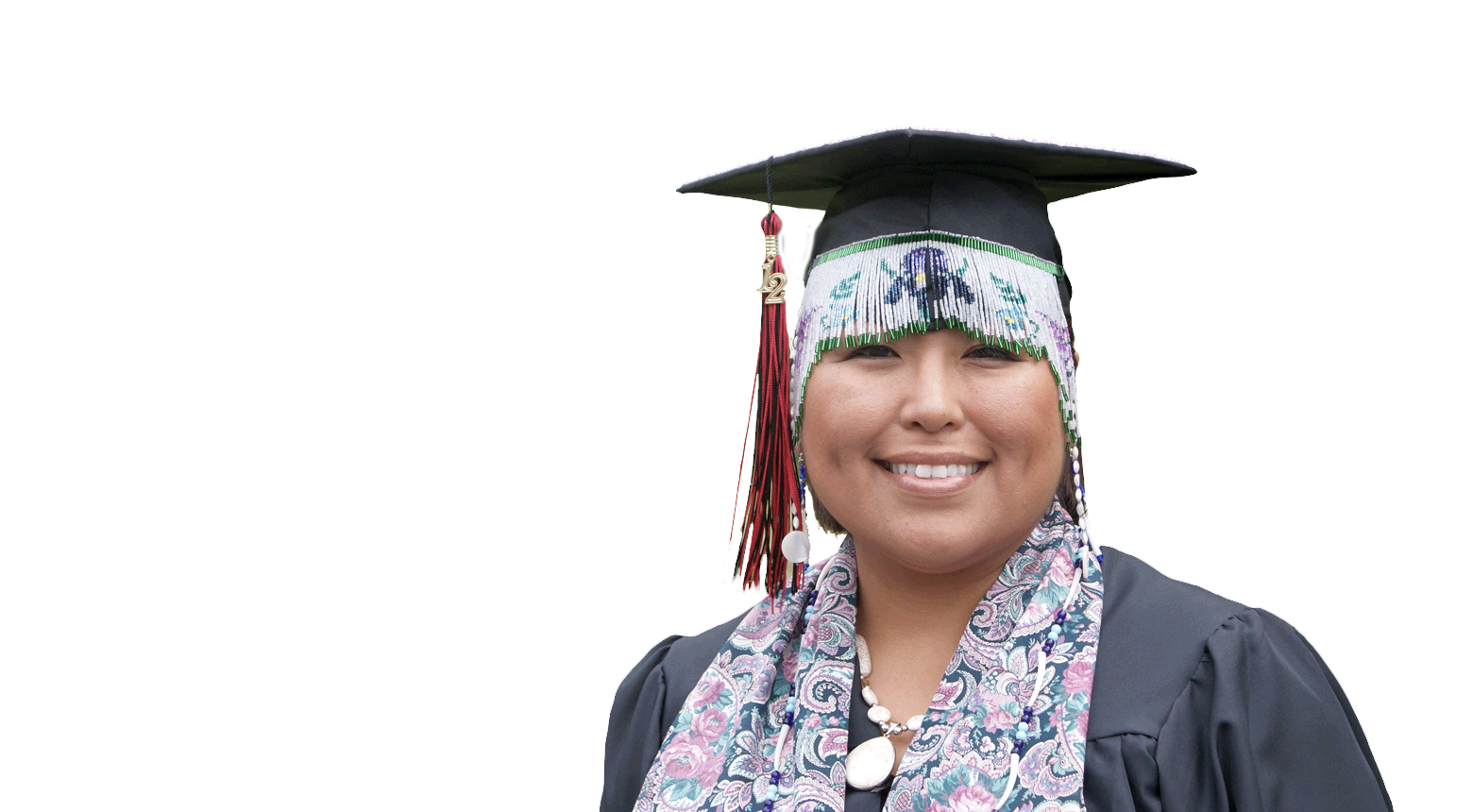
1994
Expanding STEM Access through Tribal Colleges
Math, science, and technology education improved at tribal colleges in the United States.
Over ten years, the Packard Foundation invests $20.6 million in colleges established by Native American Tribes, supporting science, mathematics, and technology education at these schools.
Over ten years, the Packard Foundation invests $20.6 million in Tribal Colleges and Universities (TCUs) in the United States, with a focus on supporting science, mathematics, and technology education at those institutions.
Grants support individual TCUs as well as the American Indian College Fund. The Foundation invests in both the intellectual and physical capital of the TCUs, funding scholarships for Native American students, fellowships for faculty development, development of academic programs, and the construction of modern science and math classrooms and research labs. This assistance helps make a college education a possibility for thousands of Native American students, and provides hope for social and economic change in their communities.

1995
Expanding Western U.S. Land Conservation with Loans
Low-interest loans help conserve 1.6 million acres of land valued at more than $1 billion.
The Packard Foundation provides funding for land acquisition and a variety of conservation projects in 10 western states. Investments of more than $150 million protect 1.6 million acres of land valued at more than $1 billion.
The Packard Foundation provides more than $150 million in bridge loans for the acquisition of land and a variety of other conservation projects in 10 western states. These types of investments offer beneficiaries a flexibility different than that offered by grants, and become known as program-related investments (PRIs) in the philanthropic and nonprofit fields. These program-related investments have protected some 1.6 million acres of land valued at more than $1 billion. PRIs, often made in the form of low-interest loans, advance the Foundation’s programmatic strategies, extend its impact, and provide flexibility in projects supported.
In addition to facilitating the purchase of land, the Foundation has helped with ecosystem restorations, sustainable forestry and fishery projects, transfers of development rights, and enhanced visitor and office facilities at conservation sites.

1996
Bringing Safe Medical Abortion Drug to U.S. Women
The safe medical abortion drug mifepristone is brought to market in the U.S.
Grant and loan support from the Packard Foundation is key to bringing the safe medical abortion drug mifepristone to market in the United States. The Foundation’s investments keep the distributor afloat during the lengthy FDA approval process.
Grant and loan support from the Packard Foundation helps bring the safe medical abortion drug mifepristone to the market in the United States.
Danco Laboratories, licensed by the Population Council to distribute the drug, runs short on funds due to delays in Food and Drug Administration approval of the drug, originally known as RU-486 and branded as Mifeprex. Danco also has difficulty attracting investors because of controversy about the medication.
The Foundation steps in with $14.2 million in program-related investments to keep the research and regulatory work going—low-interest loans that have since been fully repaid. The FDA finally approves Mifeprex in September of 2000, and over the next decade more than one million U.S. women benefit from its use.
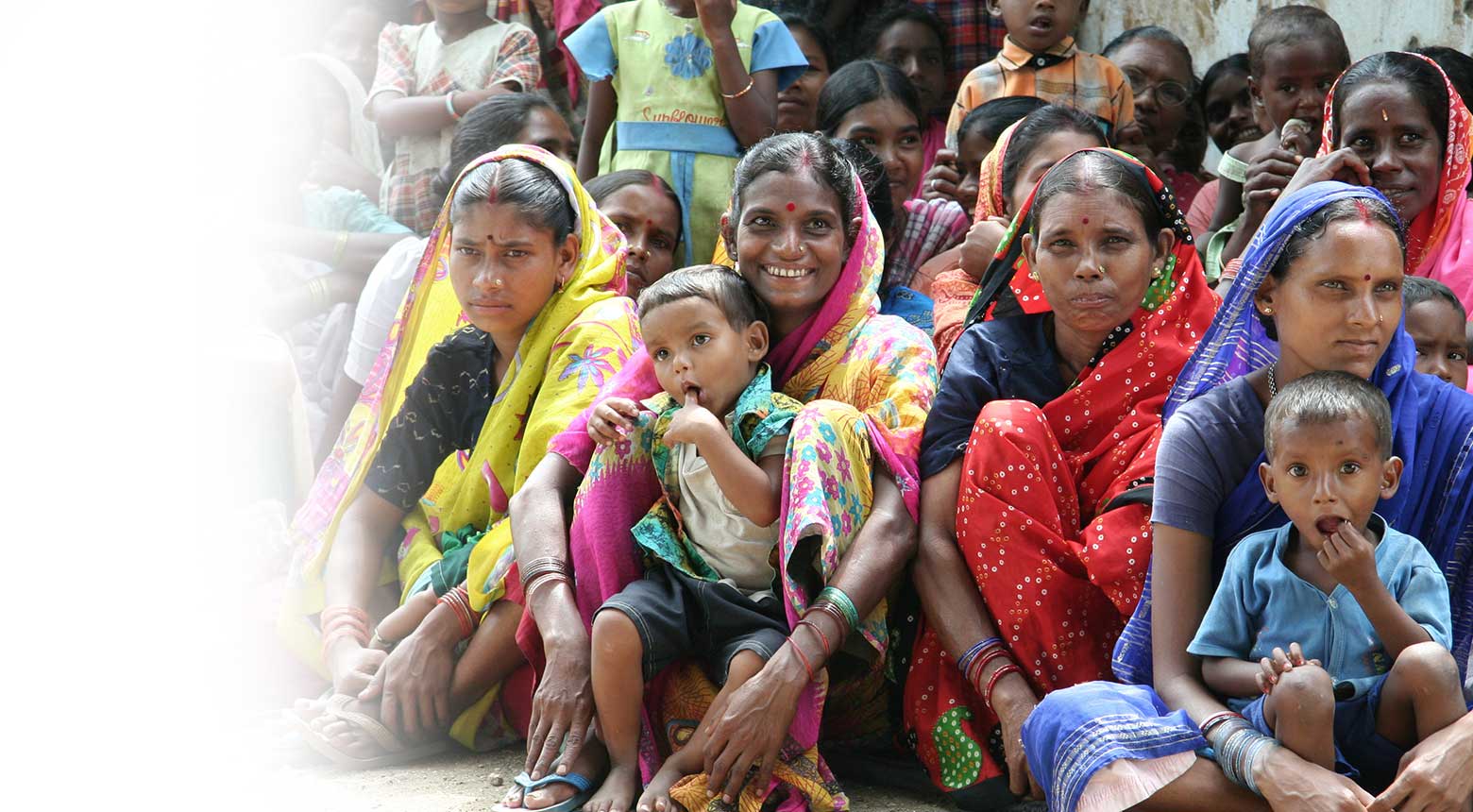
1996
Social Franchising Extends Family Planning in India
The Packard Foundation helps establish the social franchising model while expanding family planning services in India.
Family planning work in India helps build the concept of social franchising. The Foundation funds Janani, which operates more than 100 clinics, advises government on policy, and develops contraceptive technologies.
The Packard Foundation helps bold proponents establish social franchising with its support of Janani, an affiliate of DKT International that provides family planning and abortion care services in Northern India. Social franchising is similar to commercial franchising, which allows businesses to expand rapidly to reach more consumers, but its goal is societal benefit rather than financial profit.
Grant funding has helped Janani grow into a strong and versatile organization. As of 2014, it operates more than 100 health clinics and has become a valued partner with local government, providing advice on public policy issues and technical training in addition to family planning services. Janani partners with the government and international NGOs on research into new contraceptive technologies.

1998
Integrating Approaches Preserves Iconic California Landscapes
Conserving California Landscapes Initiative protects spectacular Golden State landscapes.
The Conserving California Landscapes Initiative is launched to protect scenic and environmentally significant areas. $148 million in grants and $55 million in program-related investments leverage private and public funds to preserve 450,000 acres.
The Packard Foundation launches the Conserving California Landscapes Initiative to preserve spectacular views and biological resources on the Central Coast, Central Valley, and the Sierra Nevada.
Over a five-year period, the Foundation makes $148 million in grants and $55 million in program-related investments. This leverages significant public and private funding for the initiative, which preserves 450,000 acres valued at more than $1 billion. Projects include the Coast Dairies, grassland and marshland in the Sierra Valley, the Elkhorn Slough, and salmon habitat on the upper Sacramento.
Approaches used on the initiative include outright purchase of land, agricultural and conservation easements, and advocacy for public policy that protects pristine landscapes.

1998
Early China Partnership Spurs Sustainable Energy
China Sustainable Energy Program improves energy efficiency and use of renewable resources.
The Packard Foundation funds creation of the China Sustainable Energy Program, connecting China with experts from around the globe for advice on energy efficiency and renewable resources.
The Packard Foundation funds the creation of the China Sustainable Energy Program to help China improve its energy efficiency and use of renewable resources. The program helps Chinese agencies and entrepreneurs solve energy challenges in part by connecting them with best practices expertise from around the world. This is a two-way street; as China becomes a world innovator in the fight against global warming, the program shares its innovations.
The program has helped China improve energy efficiency in transportation and manufacturing, and expanded energy options, particularly with alternatives to coal. Utilities and buildings are more sustainable. China continues to work to reduce energy use, carbon dioxide emissions, and air pollution.
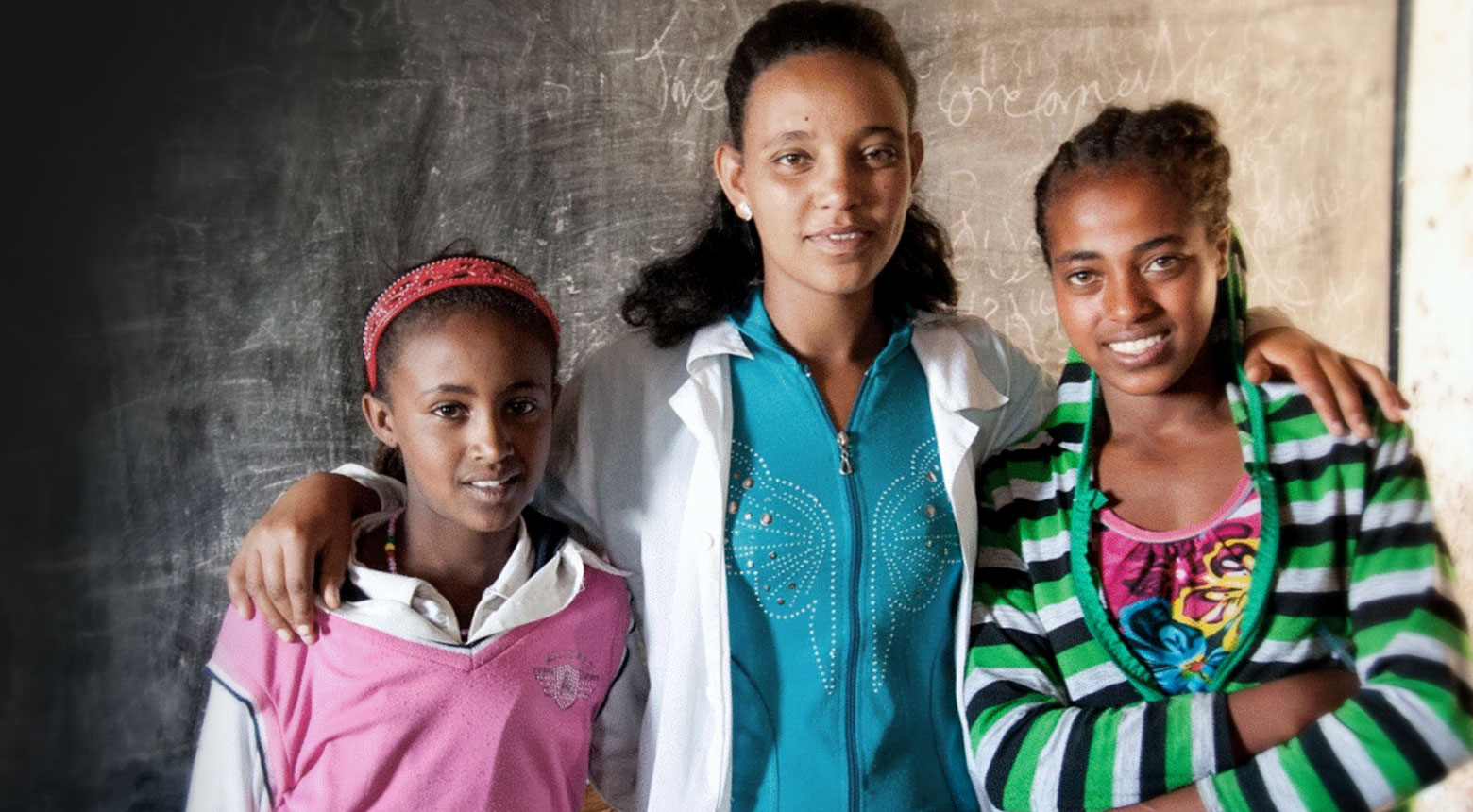
1998
Supporting High-Impact Reproductive Health Leaders
Family planning and reproductive health bolstered through leadership development in highest-need countries.
The Packard Foundation cultivates leaders for family planning and reproductive health work in selected nations. More than 2,000 people participate in leadership development programs that deliver knowledge, strengthen skills, build commitments, and expand vision.
The Packard Foundation boosts family planning and reproductive health by funding leadership development in countries in which it makes grants in support of this work. The goal is to help future leaders advance reproductive health in their areas by helping them gain knowledge, strengthen skills, build commitments, and expand their vision.
Ultimately, having strong leaders on the ground in focus countries helps advance the Foundation’s efforts to address population growth, promote positive reproductive health, and ensure individual reproductive health and rights in order to improve the quality of life for more people.

1998
Pacific Ocean Marine Conservation
From Baja to Bali, protecting some of the world’s most biologically important coasts and marine areas.
The Packard Foundation creates two subprograms, one focusing on the Gulf of California and the other on the Western Pacific, to help protect some of the world’s most biologically diverse marine habitats.
The Packard Foundation creates the Gulf of California and Western Pacific subprograms within its Conservation and Science program. Both subprograms help local communities and governments to be effective stewards of their own oceans and coasts, protecting biological diversity, ecosystem goods and services, and social wellbeing. Both subprograms promote an approach involving marine protected areas (MPAs), and grant-making supports the administration and management of these areas by local entities. The Gulf of California program continues to work on strengthening these MPAs, improving fisheries management and addressing threats from coastal development near critical marine habitats; the Western Pacific program has sparked growing interest from small island governments to conserve more coastal areas and improve fisheries management.

1999
Implementation of State Children’s Health Insurance Program
Implementation of State Children’s Health Insurance Program brings health coverage to millions of kids since the program’s inception.
The Children’s Health Insurance Program brings coverage to millions of kids. Packard Foundation grants to children’s and health policy organizations speeds implementation; support of research brings better understanding of issues.
The State Children’s Health Insurance Program and its reauthorization in 2009 provide health coverage to millions of kids from families of modest means.
The Packard Foundation supports the implementation of CHIP in states. Grants to the National Academy for State Health Policy, the National Governor’s Association, and the National Conference of State Legislatures give policy makers the tools they need to rapidly bring SCHIP to all 50 states.
The Foundation partners with the Agency for Healthcare Research and Quality and the Health Resources and Services Administration to launch the Child Health Insurance Research Initiative to inform policy makers about health insurance issues, particularly for children from underserved populations and those with special health care needs.

1999
Emergency Contraception Brought to Market to Benefit Millions of Women
Plan B emergency contraception medication guided to market when other support was limited.
The Packard Foundation plays a major role in bringing Plan B emergency contraception medication to the market. Grants and program-related investments aid development, testing, preparation for FDA approval, training and education. Over the next fifteen years more than 15 million U.S. women benefit from its use.
The Packard Foundation plays a major role in bringing the emergency contraception medication levonorgestrel, commonly known as Plan B, to the market and promoting its safe use, both in the United States and worldwide.
The Foundation makes grants and program-related investments supporting Plan B along every step of the process, from research and development to extensive testing of its safety and effectiveness. Funding also supports preparation for the process of securing approval of levonorgestrel from the Food and Drug Administration, and training and education about the use of the emergency contraceptive medication. The Foundation’s early seed capital of $6.5 million, together with matched capital from the Open Society Institute, allows Women’s Capital to overcome initial barriers to market launch, and establish sufficient track record of sales and financial strength to attract private investors over the long-term.
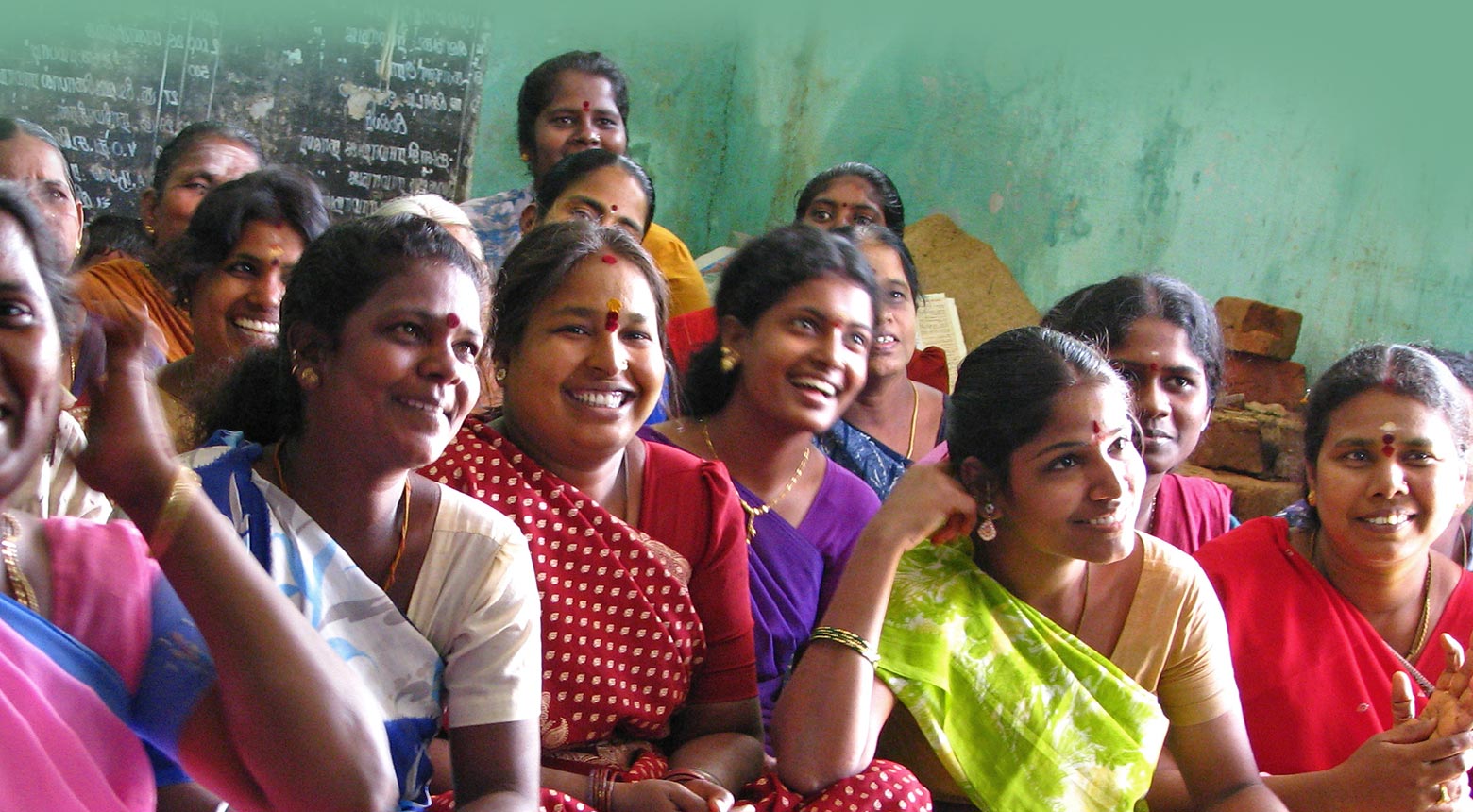
2001
Young Adults Delay Childbearing in Ambitious India Project
PRACHAR Project improves the reproductive behavior of adolescents and young adults in Bihar, India.
The Foundation invests in the ambitious PRACHAR Project, an initiative by Pathfinder International that goes on to successfully delay the age at which participating women have their first child, an indicator long thought to change only through broad secular improvements in social and economic contexts.
The Foundation invests in the ambitious PRACHAR Project, an initiative by Pathfinder International that goes on to successfully delay the age at which participating women have their first child, an indicator long thought to change only through broad secular improvements in social and economic contexts.
Known as the PRACHAR Project (for “Promoting Change in Reproductive Behavior in Bihar”), the extensive pilot program improves the long-term health and welfare of young mothers and their children in Bihar, India by changing traditional customs of early childbearing.
By delaying the first child until the mother is at least 21, and spacing subsequent children by three to five years, communities have the potential to benefit from a significant drop in maternal and infant mortality rates, and from improvements in the survival and general health of mothers and children after later pregnancies. Further, PRACHAR shows how such interventions can impact the age of marriage.
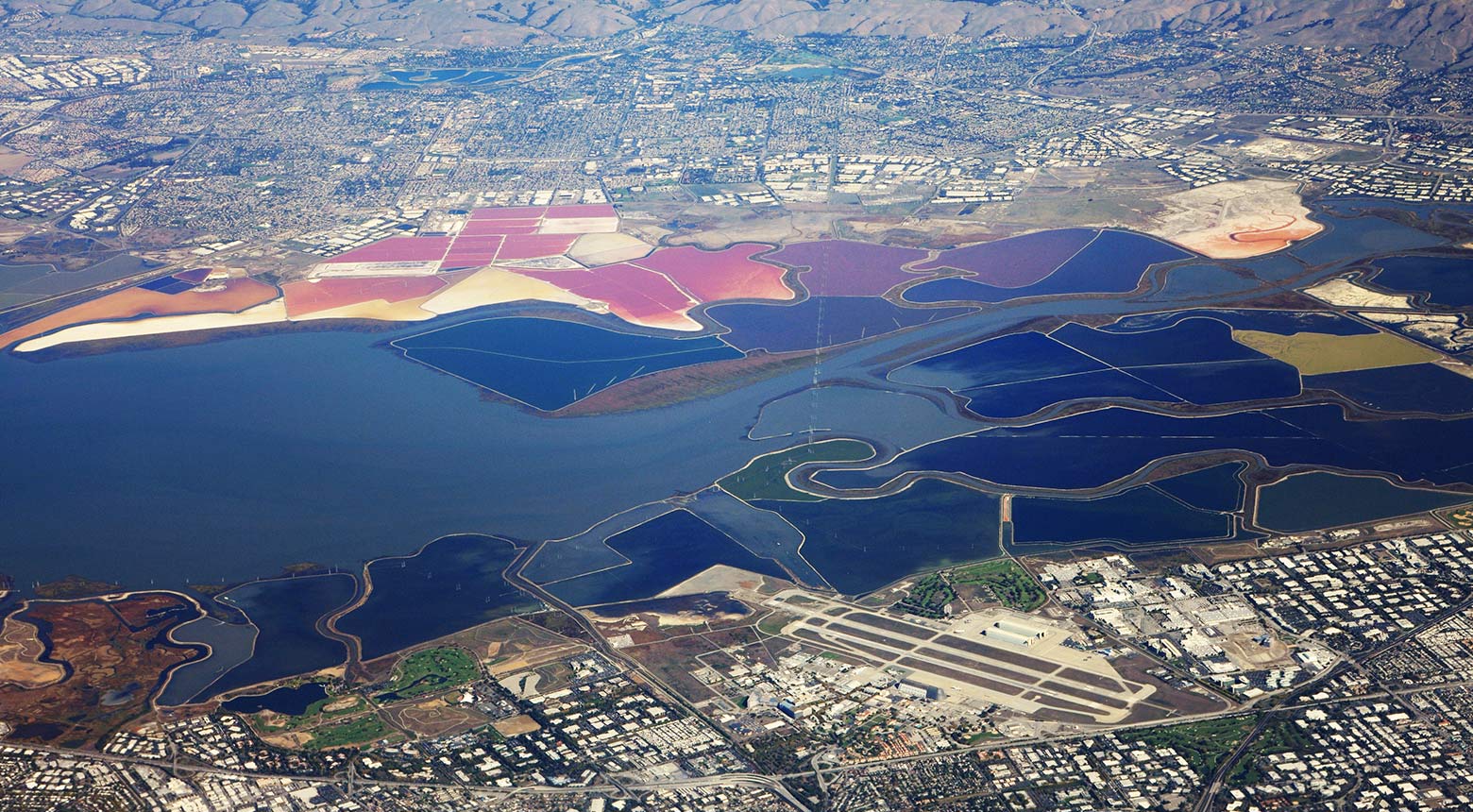
2002
Massive Urban Shoreline Restoration Protects SF Bay
Foundation helps acquire and restore thousands of acres of salt ponds along the San Francisco Bay shore and Napa River.
In a landmark public-private partnership, the Packard Foundation teams with the Moore and Hewlett Foundations and others to purchase 16,500 acres of salt ponds along the San Francisco Bay shore and Napa River to turn them into wetlands and tidal marshes.
In a landmark public-private partnership, Packard teams with the Moore Foundation, Hewlett Foundation and others to purchase 16,500 acres of salt ponds along the San Francisco Bay shore and Napa River and turn them into wetlands and tidal marshes.
As the largest wetlands restoration project on the west coast, the effort helps restore over 40 miles of shoreline.
The Foundation and other funding partners agree to invest an additional $15 million for stewardship and long-term restoration planning efforts, resulting in a rich mosaic of habitats supporting millions of native and migrating species that rely on the Bay. The restored shoreline provides significant public access and education opportunities as well as critical flood protection for the South Bay.

2003
Delivering Quality Preschool for California’s Children
Foundation’s ten-year commitment to achieve the ambitious vision of voluntary quality preschool for all three- and four-year olds in California helps ultimately to serve nearly 300,000 children who need access the most.
With growing scientific understanding of the importance of early learning for college graduation and success in life, the Foundation focuses its education grantmaking on advancing public policy changes that provide funding and directives ensuring all children can access the quality preschool experiences they need to succeed in school and beyond.
In ten years, the Packard Foundation’s preschool strategy does not fully achieve its goal. However, the strategy succeeds in building awareness and political will among policy makers and other constituencies that the lack of quality preschool is an important problem in need of a state-sponsored solution, and also, support is needed for high-quality preschool demonstrations that can be spread statewide.
By 2013, publicly funded state preschool has grown from $614 million in 2003 to $841 million annually. Local programs initially created out of tobacco settlements to serve the health and education needs of young children now dedicate an additional $100 million a year towards expanding preschool for more. The combined effect of these and other investments has expanded preschool opportunities for California’s three- and four-year olds—from 97,000 spaces in 2003 to 188,000 in 2013.
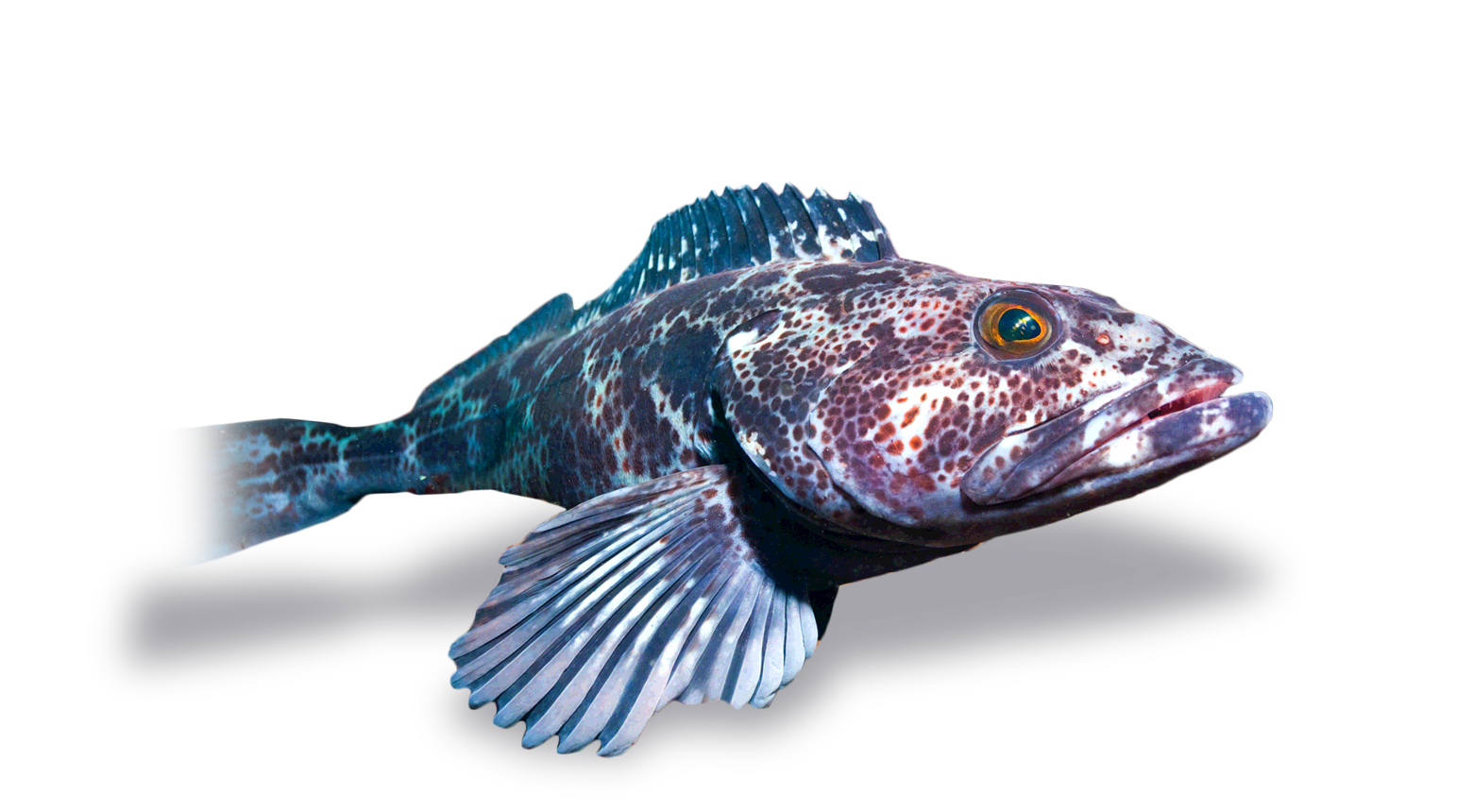
2003
Creating First-Ever Statewide Marine Protected Areas
Marine Protected Areas deliver conservation, stability to more than 16 percent of California’s coastal waters between Santa Barbara and Mendocino counties.
Foundation provides critical support and leadership for a public process to design California’s Marine Protected Areas (MPAs). The interconnected statewide network of MPAs is the first of its kind in the United States.
Working collaboratively with the Gordon and Betty Moore Foundation, Marisla Foundation, the Campbell Foundation and the Annenberg Foundation, Packard provides critical support for a public process to design the state’s Marine Protected Areas. This interconnected, statewide network of MPAs is the first of its kind in the United States.
A comprehensive science-based strategy helps the California Fish and Game Commission designate a network of 119 MPAs in all, including 48 “no-take” marine reserves, 70 marine conservation areas, and one marine park covering more than 852 square miles—or 16 percent of state waters.
Today the foundations continue to support the MPA Monitoring Enterprise, a new entity focused on delivering monitoring data to inform long-term adaptive management of the statewide MPA network.
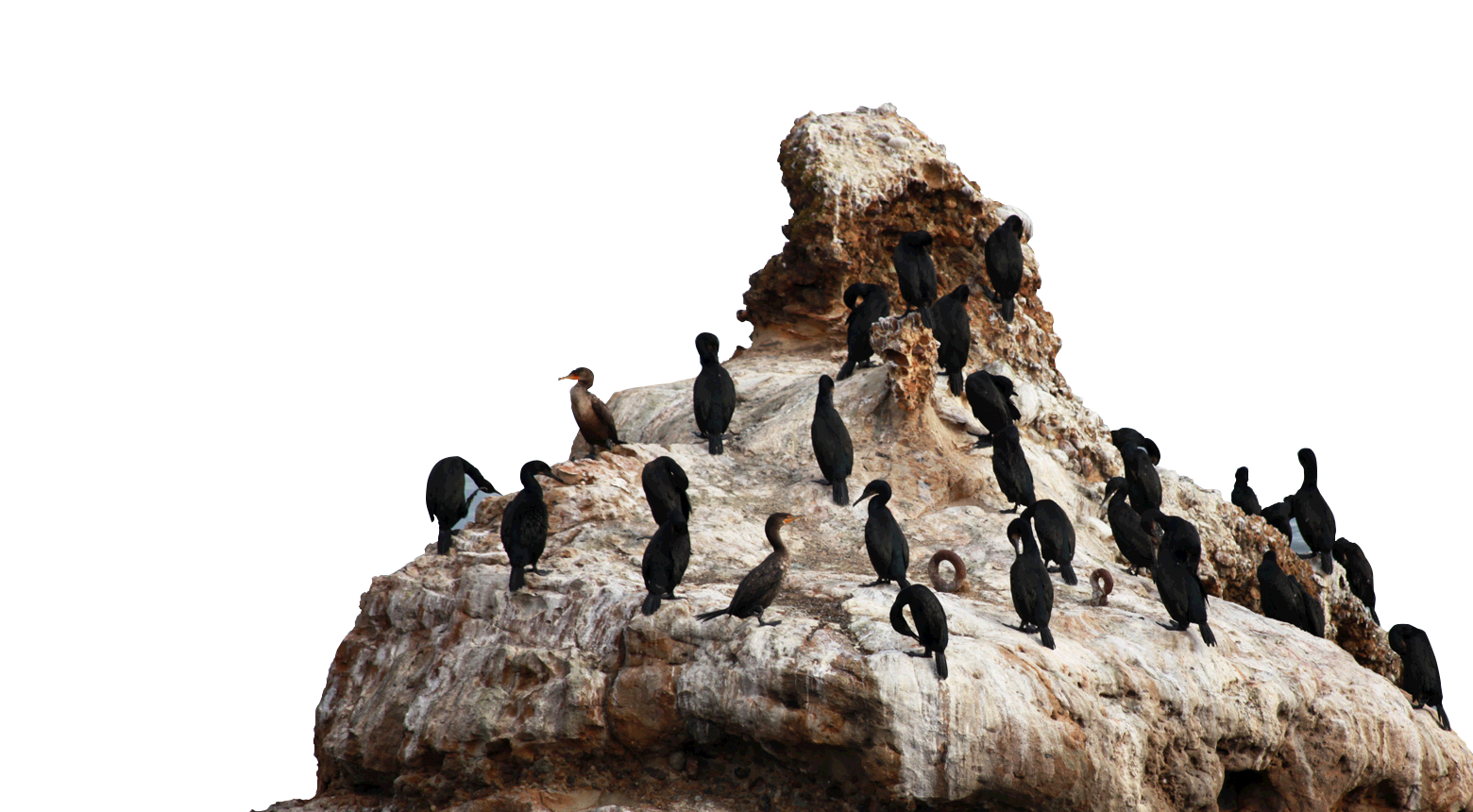
2006
Moving Marine Birds From Brink of Extinction
Packard Foundation commits to reversing the decline of marine birds as a contribution to the restoration of sustainable marine ecosystems.
Seeking to reverse the decline of select bird species , the Foundation makes an initial $2 million commitment to eradicate invasive species from important seabird breeding islands. After the success of these initial projects, the Foundation further expands this island restoration work and supports seabird bycatch reduction and protection of critical coastal habitat for shorebirds.
Packard’s initial $2 million investment is focused on eradicating invasive mammal species from islands important to seabird nesting and foraging; reducing the incidental bycatch of seabirds (especially threatened and endangered albatross and petrels) by fisheries; and improving the management of key shorebird habitats in the Pacific Flyway. By 2010, 19 successful eradications of invasive species are complete, and bycatch is reduced by 85% in a fishery off the coast of South Africa where new technology was applied. Over 200,000 acres of critical shorebird habitat are designated as protected or under improved management systems.
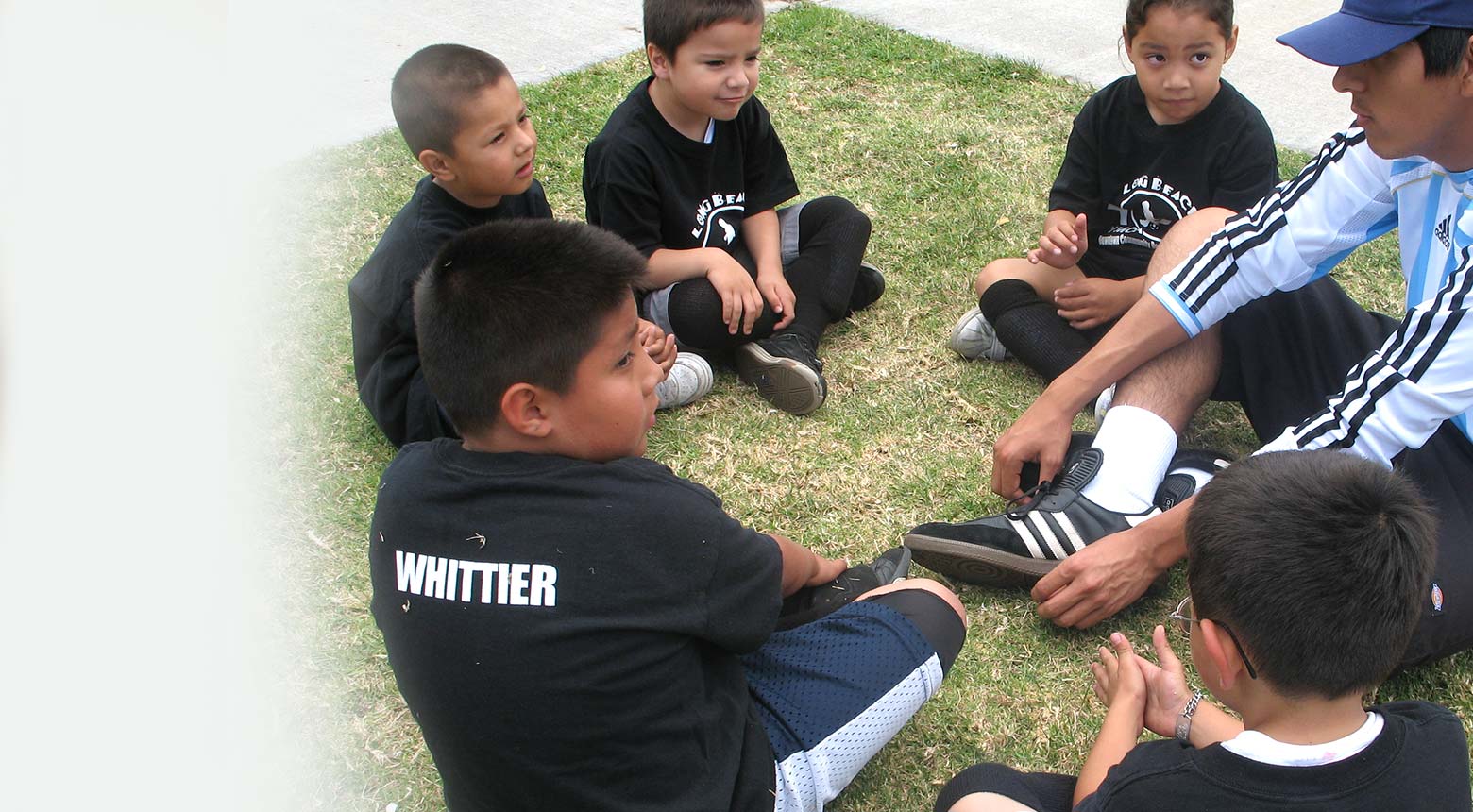
2006
Expanding After-School Programs in California
The Foundation seizes an opportunity to assist the State of California in expanding its After-school program.
Joining with the California Department of Education and other philanthropies, the Foundation funds a comprehensive planning process leading to the development of a blueprint and implementation of the state-wide expansion of after-school programs in California.
In 2002, California passes Proposition 49 which annually sets aside $550 million of state funds to support after-school programs in the state’s elementary and middle schools. The measure goes into effect in 2007, quadrupling the number of programs from 1,000 to 4,000. The Foundation assists hundreds of start-up programs with an infusion of statewide technical assistance and, ultimately, fosters the development of a regional system of technical support anchored in a new entity funded by the Foundation. Foundation grants also stimulate the creation of after-school career pathways which link jobs in after-school programs to long-term careers. In 2009, with impetus from the Foundation, after-school programs begin to address the “summer learning slide” by extending opportunities for summer enrichment and stimulating increased state policy maker attention to this issue.

2006
Unique Coalition Protects World’s Largest Temperate Rainforest
Environmental groups, indigenous people, industry and government agree on a protected area network and ecosystem-based management across the 21 million-acre Great Bear Rainforest on the coast of British Columbia.
As part of the Cascadia program, the Foundation provided 33 grants totaling $19,749,774 to help secure a landmark agreement to protect the Great Bear Rainforest, a globally-significant coastal temperate rainforest in British Columbia. The agreement included protected areas, ecosystem-based management, new land use decision-making processes that are more inclusive of indigenous interests, and a regional economic development fund.
In the 1990s, the Great Bear Rainforest is under threat from logging in the 1990s as tree supplies to the south and north began to dwindle. After years of international market campaigns and regional protests, solution-oriented negotiations begin among environmental groups, industry, the provincial government, and indigenous First Nations. The Packard Foundation supports these negotiations and then joins with other funders to back a historic agreement permanently protecting the Great Bear Rainforest (GBR), a globally significant, 21 million acre coastal temperate rainforest in British Columbia.
The agreement includes 6.5 million acres of strict protection. Ecosystem-based management is prescribed for the balance of the landscape. As of 2009, 50 percent of the old growth ecosystems in the Great Bear Rainforest are protected, up from five percent before the agreement was reached. In addition, coastal First Nations now have a stronger say in the region’s management decisions. Finally, a $120 million fund, sourced from the Canadian government and private donors, serves to kick start a conservation economy in First Nation communities.
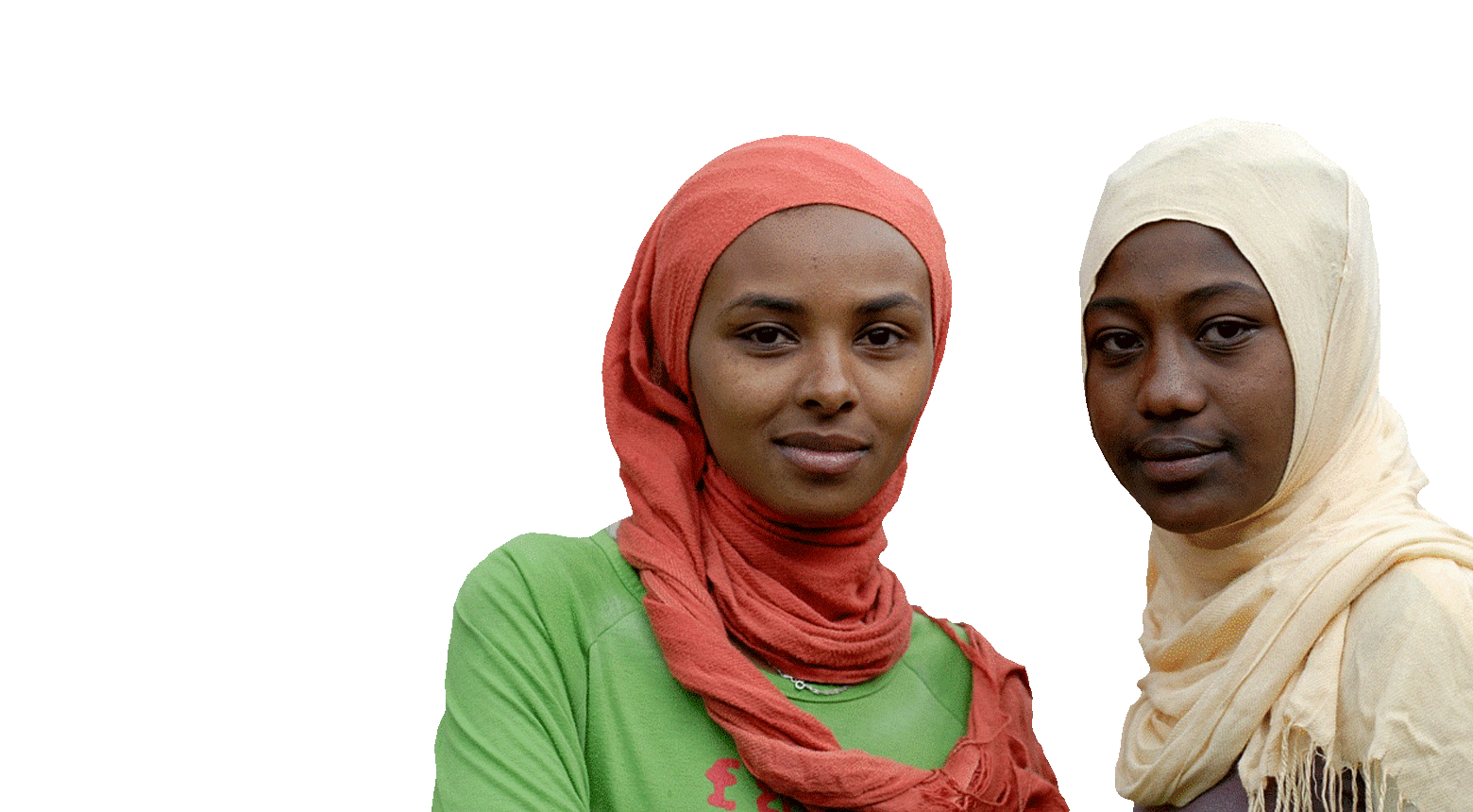
2007
Linking Population Growth with Economic Development Sparks Ethiopia Action
Packard Foundation and World Bank examine links between population growth and development potential in Ethiopia; help catalyze nationwide action on reproductive health.
Partnering with the World Bank, the Foundation commissions a study examining the impact of high population growth on Ethiopia’s development potential. Leaders in Africa’s second largest nation dramatically expand reproductive health training, supplies and access.
Partnering with the World Bank, the Foundation commissions a study examining the impact of high population growth on Ethiopia’s development potential.
Leaders in Africa’s second largest nation dramatically expand reproductive health training, supplies and access.
The 2007 report, “Capturing the Demographic Bonus in Ethiopia,” studies connections between the sub-Saharan nation’s population growth (2 million annually at the time), fertility and mortality rates, poverty reduction strategies, economic potential and more. The findings capture the attention of government officials in Ethiopia, where it is discussed at the highest level, and is credited with helping to change attitudes toward population planning and economic development in the country.

2007
Insuring America’s Children: States Leading the Way
Foundation launches new states-to-national strategy to ensure all of America’s children have health insurance.
Building on its early work in SCHIP implementation, the Foundation launches a new, multi-year investment aimed at ensuring all children in the U.S. have health insurance providing the care they need. By 2012, the national rate of children without insurance reaches an all-time low of 7 percent.
With the implementation of the State Children’s Health Insurance Program (SCHIP) in 1998, millions of kids receive health coverage. The Foundation supports implementation at the national and state level, and in 2007 approves “Insuring America’s Children” (IAC) a new, multi-year investment aimed at ensuring all children in the U.S. have health insurance. Working at the state level, where policy momentum is building and solutions are being tested, grantmaking is focused on building networks and providing expert technical assistance on communications, advocacy and policy reform.
In the years that follow, many states grow their coverage for children, with 11 adopting programs to cover all children. By 2012, the rate of children without health insurance reaches an all-time low at 7 percent. As of 2013, more than 1.3 million children are enrolled in Medicaid and the Children’s Health Insurance Program (CHIP) in states where IAC grantees are working.
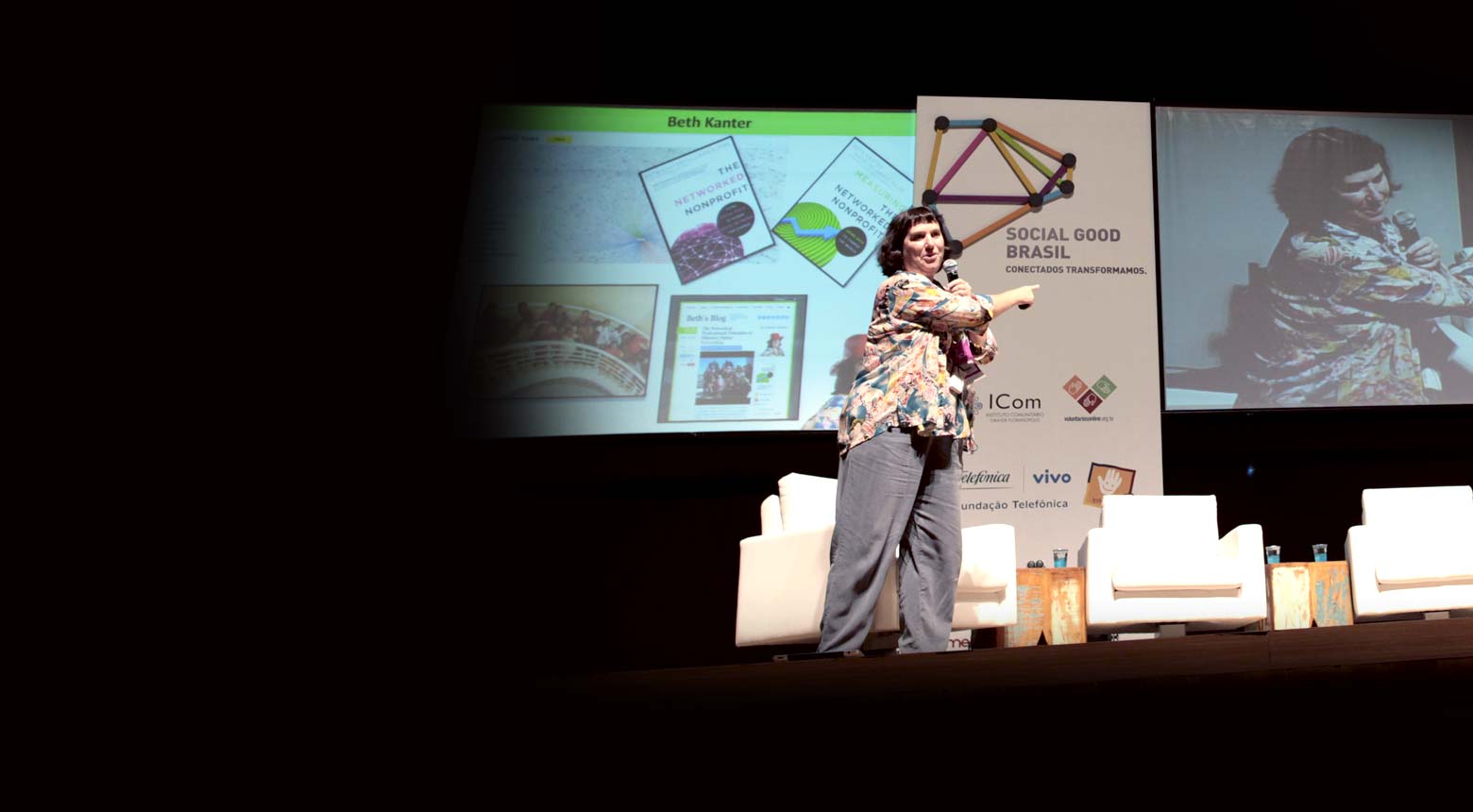
2008
Early Philanthropic Inquiry into Social Media Networks
Foundation “likes” power of social media as strategy for social change.
As the social media age fully launches, the Foundation invests in an exploration with other philanthropy groups to understand the opportunities and pitfalls, including adding noted nonprofit technology advocate Beth Kanter as a Visiting Scholar focused exclusively on social media.
With the addition of Beth Kanter as a Visiting Scholar focused exclusively on social media, the Packard Foundation deepens awareness of emerging communication technologies and their power to advance social change.
Ms. Kanter, an educator and leading thinker on the relationship between technology and impact in the independent sector, uses her four-year tenure at the Foundation to increase social media literacy among Packard staff, grantees, and the broader field, exposing them to a diverse set of web-based engagement strategies, tools and technologies through frequent blog posts and research. She directly touches more than 150 grantee organizations and reaches hundreds of thousands of people during this time through Facebook, Twitter, her blog, and two books.

2008
Investing at Global Scale to Avert Catastrophic Climate Change
Foundation bets big on plan to reduce greenhouse gas emissions and avert catastrophic global climate change.
The Packard Foundation makes an initial seven-year $500 million commitment to launch and support the ClimateWorks Foundation and network, designed to be the central hub of a global philanthropic network organized to help win the battle against climate change.
The Packard Foundation makes a seven-year $500 million commitment (later continued for another seven years at $350 million) to launch and support the ClimateWorks Foundation (CWF) and network. Designed to be the central hub of a global philanthropic network organized to win the battle against climate change, CWF supports high-return policies in the geographic regions and economic sectors with the greatest potential for reducing green house gas emissions.
Backed also by comparable commitments from the Hewlett and McKnight Foundations, CWF pursues the adoption of policies that limit annual global greenhouse gas emissions to 44 billion metric tons by the year 2020 (25 percent below projections) and 35 billion metric tons by the year 2030 (50 percent below projections). CWF policy work is focused in the nations and regions with the most emissions mitigation potential: the United States, European Union, China, India, Latin America and Indonesia.

2008
Connecting U.S. and Canadian Rockies Protection in Once-in-a-Lifetime Opportunity
Montana Legacy Project buys 310,000 acres from Plum Creek Timber, right at the heart of the Crown of the Continent ecosystem, a larger area of wild habitat encompassing Glacier National Park, the Bob Marshall Wilderness and surrounding lands.
The Montana Legacy Project purchases more than 310,000 acres from Plum Creek Timber Company, preserving habitat for grizzly bears and Canada lynx. The Packard Foundation is an early investor in the project through grants and PRIs.
The Montana Legacy Project represents a bold new approach in land conservation, with a focus on an entire ecosystem rather than on a single watershed or political division. The project purchases more than 310,000 acres from the Plum Creek Timber Company to head off development and allow the land to be managed more efficiently for wildlife habitat, recreation, and sustainable forestry.
The preserved land is within the Crown of the Continent ecosystem that includes Glacier National Park. It is home to a dense population of grizzly bears and is a key habitat for the endangered Canada lynx.
The Packard Foundation is an early backer of the purchase, contributing $15 million in grants and $30 million in program-related investments.

2009
Protecting Forest and Agriculture Lands for Climate Change Mitigation
Foundation targets lowering global greenhouse gas emissions by protecting forests and promoting sustainable agriculture.
The Foundation escalates its fight against climate change, helping launch the Climate and Land Use Alliance to improve land use management in the high-impact regions of the U.S., Mexico/Central America, Brazil and Indonesia.
The Foundation escalates its fight against climate change helping launch the Climate and Land Use Alliance to slow deforestation and improve agricultural practices particularly in in the U.S., Brazil and Indonesia, three of the four countries with the highest land use greenhouse gas emissions. The focus adds climate goals to traditional philanthropic land use biodiversity, economic and cultural goals.
Driven by scientific analysis that shows the global response to climate change cannot succeed without significant reductions in deforestation and improved agricultural practices, CLUA deploys a globally networked strategy with early results, including helping to reduce the rate of deforestation in the Amazon by 25 percent between 2008 and 2013.
Key funding partners include the Ford, ClimateWorks and Gordon and Betty Moore Foundations.
2009
Helping Silicon Valley Nonprofits Survive the Great Recession
An organization as a bulwark to help nonprofit organizations weather economic downturn.
As organizations struggle in the face of a major economic downturn, the Packard Foundation together with the Applied Materials Foundation establishes the Nonprofit Effectiveness Fund through the United Way of Silicon Valley.
As organizations struggle in the face of economic downturn, the Packard Foundation together with the Applied Materials Foundation establishes the Nonprofit Effectiveness Fund through the United Way of Silicon Valley. Built on the Foundation’s longstanding interest in organizational effectiveness, the fund supports strategic planning and helps nonprofits consider restructuring, consolidation, and other strategies as they regroup during the recession. Workshops on a variety of topics help organizations look for ways to leverage their social capital and continue to accomplish their missions despite the economy.
The Foundation contributes $1.5 million to the fund, which proves to be a successful pilot project. A similar fund is created through the United Way of Santa Cruz County the following year.

2009
Adding Summer Enrichment to After-School programs in California
The Foundation leads the charge to develop high quality-summer enrichment programs in California for children who need them the most.
Six hundred after-school programs extend their work into the summer for 50,000 children, and help to define what constitutes a high-quality summer enrichment program in California.
The Foundation supports the expansion of after-school into summer programs, adopting strategies that help define what constitutes high-quality summer enrichment programs in California. In 2009, with the Foundation’s support, after-school programs begin to address the learning setbacks experienced by children when they do not have access to quality summer enrichment programs. State policymakers are engaged and informed about this issue, with the goal of linking systems of education that take place during the regular school year, after-school, and summer. In addition, expert assistance is provided to help after-school programs expand their work into the summer context; ultimately, 600 after-school programs end up creating or expanding summer programs for over 50,000 children.
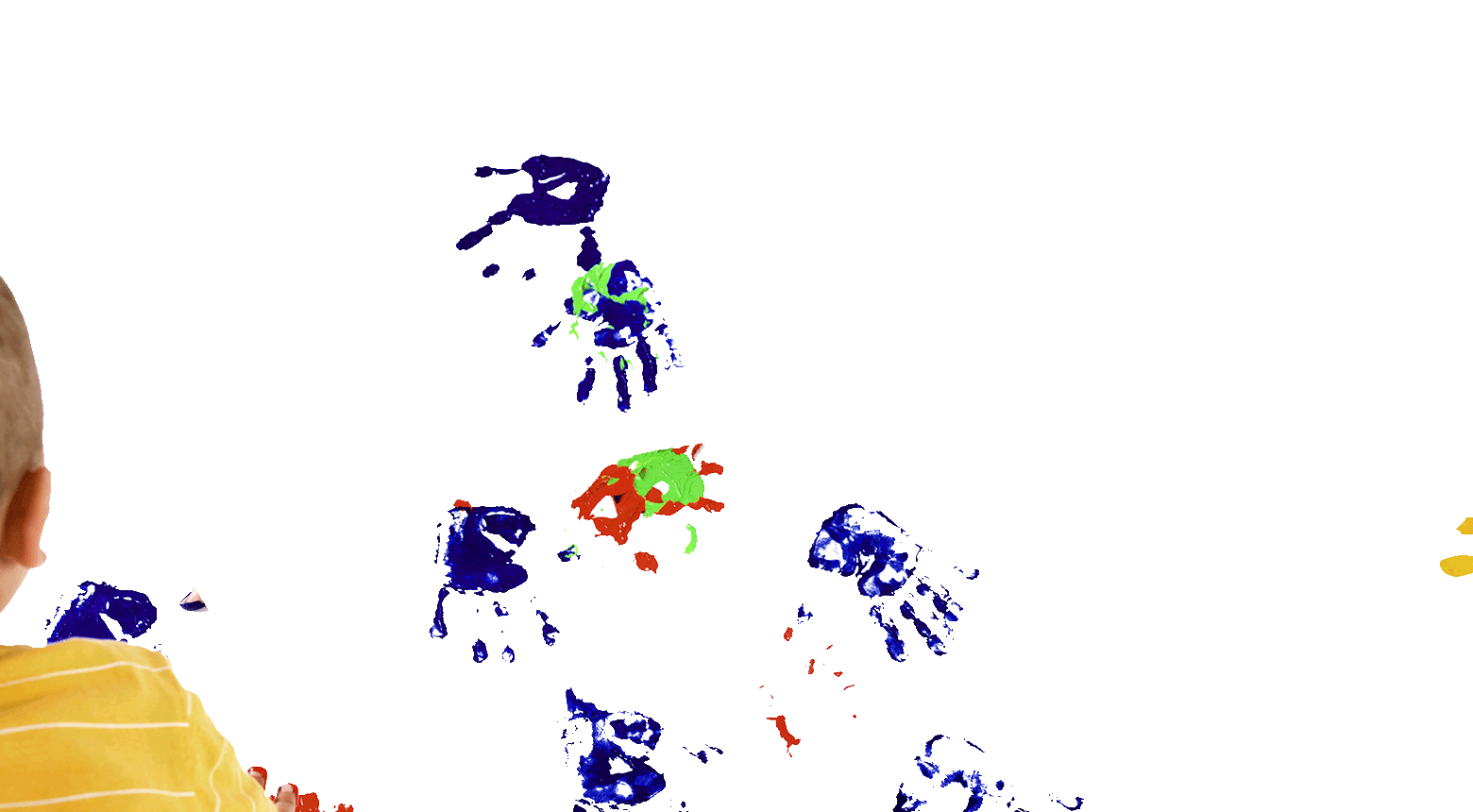
2010
More children in California get access to early education
California adopts statewide program to close the early education access gap for four-year-olds.
Transitional Kindergarten (TK) provides an additional year of a high-quality early childhood education with a certificated teacher for 120,000 four-year-olds across California, 34,000 of whom have never had access to preschool.
With growing scientific understanding of the importance of early learning for college graduation and success in life, the Foundation makes a ten-year commitment in 2003 to help all children in California access the quality preschool experiences they need to succeed in school and beyond. The Foundation’s program focuses on building awareness and political will among policy-makers and other constituencies to help the issue of quality preschool become a higher priority on the policy agenda.
In 2010, a new Transitional Kindergarten (TK) program is approved in California, with the support and backing of key Packard Foundation grantees, TK provides an additional year of a high-quality early childhood education for 120,000 four-year-olds across the state of California, 34,000 of whom qualify for publicly subsidized programs but have never had access to preschool.
The TK program will be phased in over three years beginning in 2012. Part of a broader Kindergarten Readiness Act of 2010, which includes other notable early childhood education reforms, the ambitious TK initiative helps California close the “access gap” for the four-year-olds who need it the most.

2010
Working with Seafood Markets to Protect Marine Fisheries
Marine Stewardship Council helps propel markets towards markets for more sustainable ocean fisheries.
The Packard Foundation push for sustainable ocean fishing included the launch of the Marine Stewardship Council in 1998. It makes a difference. By 2010 eight percent of the world seafood market is certified to council standards.
The Packard Foundation works on a number of fronts to address the impact of ocean fishing, funding efforts to end overfishing, promote responsible and sustainable ocean fishery management, and improve consumer access to certified sustainable seafood.
Creating the Marine Stewardship Council is a major part of this initiative, with the ambitious aim of transforming the world seafood market. The Council sets sustainability standards, helps fisheries meet the standards, and certifies those that do. It boosts awareness of the issue and encourages retailers and consumers to buy certified seafood.
The work shows significant progress. The share of the global seafood market that is certified reaches eight percent by 2010.

2013
Foundation Headquarters Achieves Net-Zero Energy
Foundation headquarters becomes largest building ever to achieve Net-Zero energy in first full year of occupancy.
By generating more electricity than it uses in its first year of occupancy, the Foundation headquarters becomes the largest building to achieve Net-Zero energy certification through the International Living Future Institute.
By generating more electricity than it uses in its first year of occupancy, the Foundation headquarters becomes the largest building to achieve Net-Zero energy certification through the International Living Future Institute.
343 Second Street is one of the few buildings worldwide to earn both Net-Zero energy and LEED Platinum certifications. To achieve these milestones, the Foundation chose sustainable materials and current technologies that could be replicated in other buildings.
Employees are actively engaged in energy monitoring and management through a real-time dashboard system and solar panels generate the energy used, representing the Foundation’s environmental values and a commitment to reducing greenhouse gas emissions.



